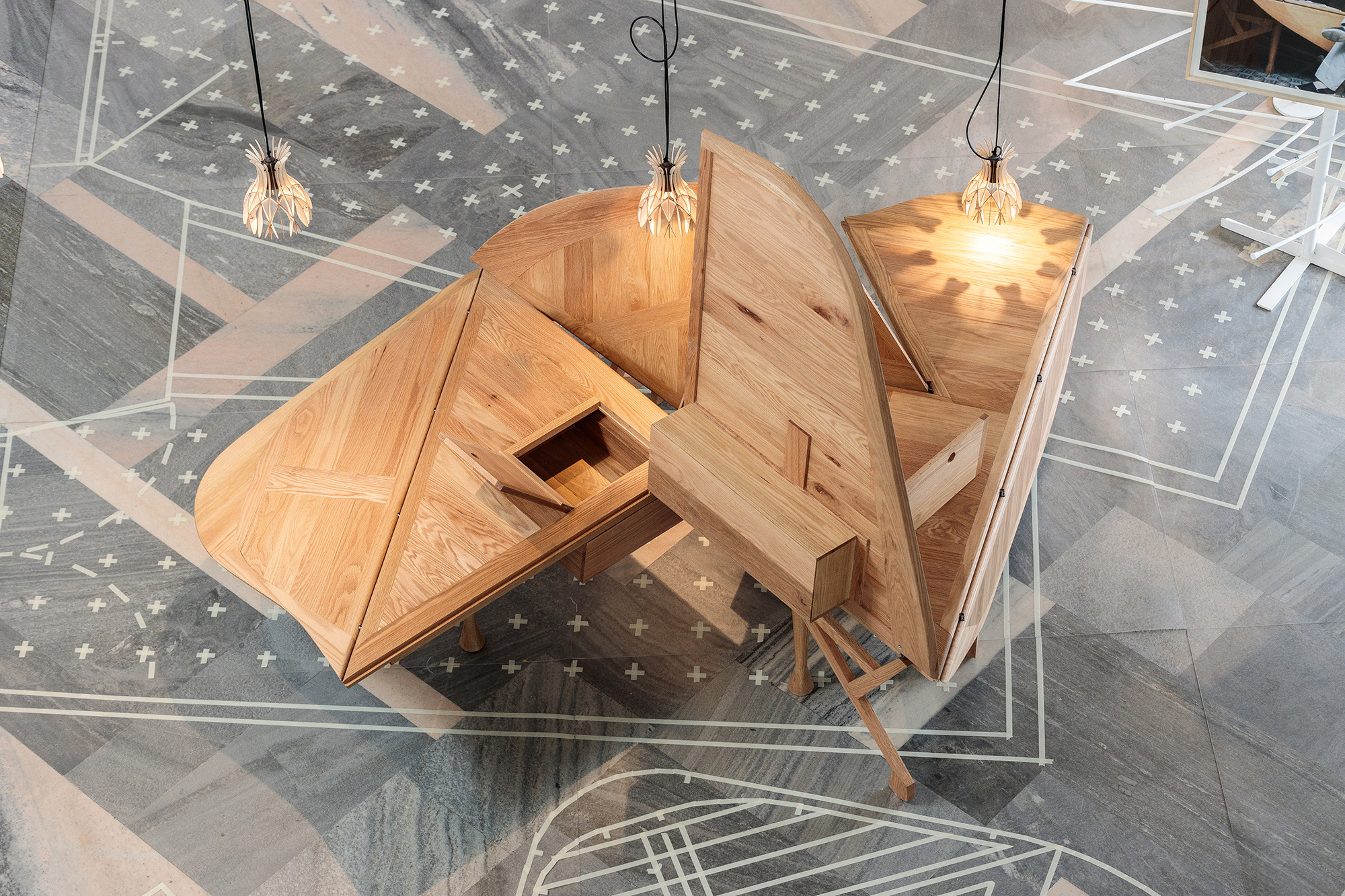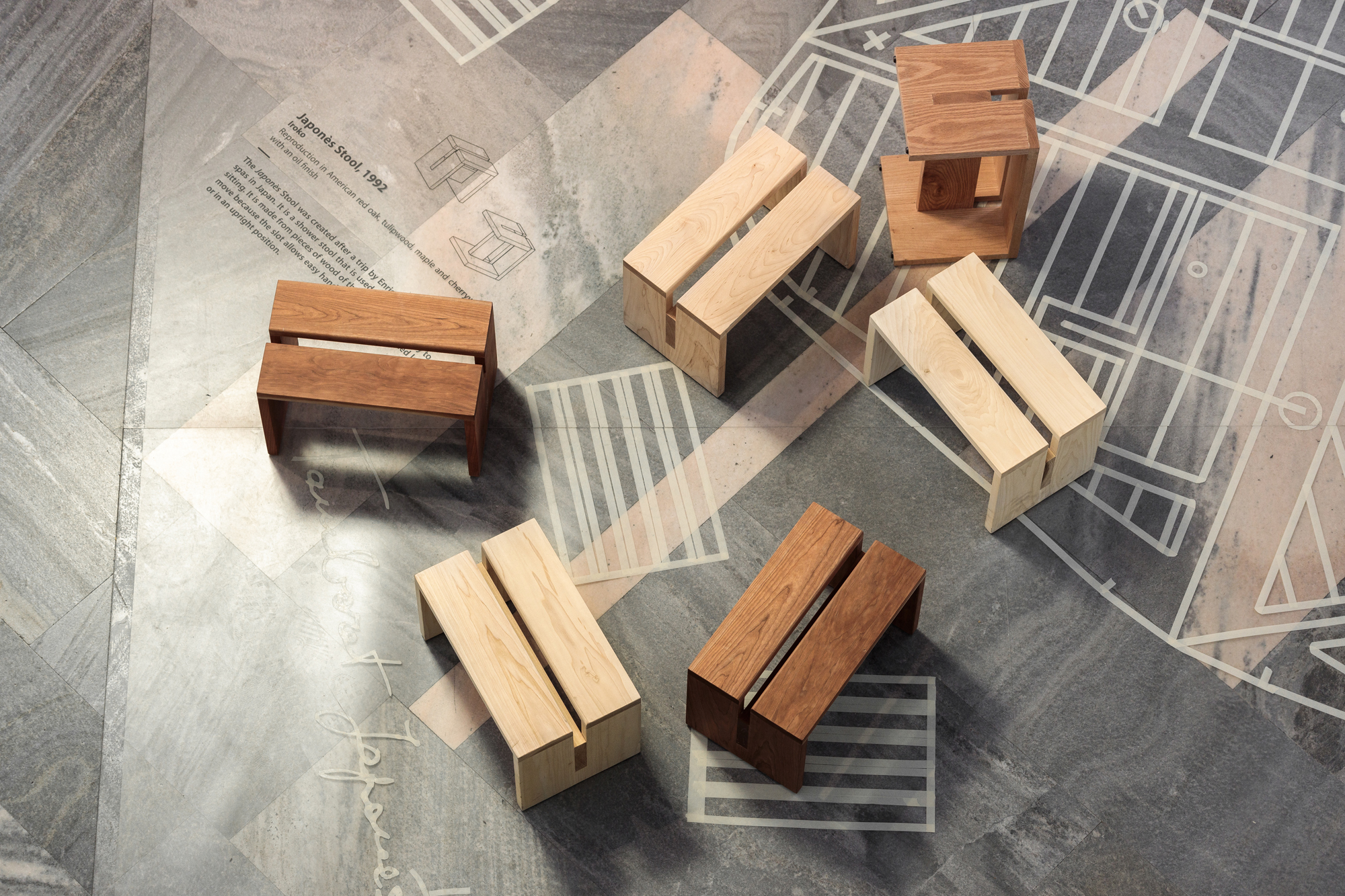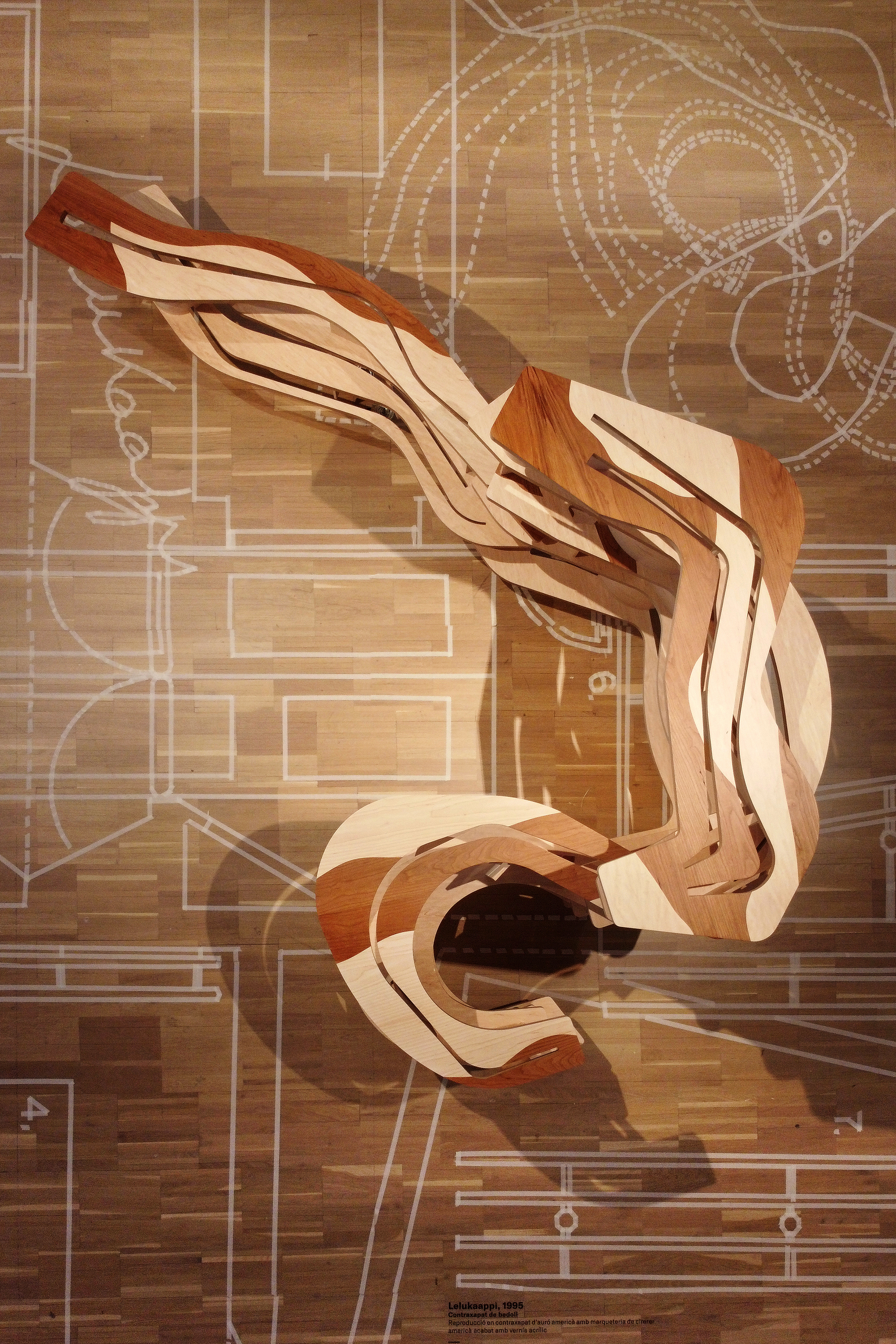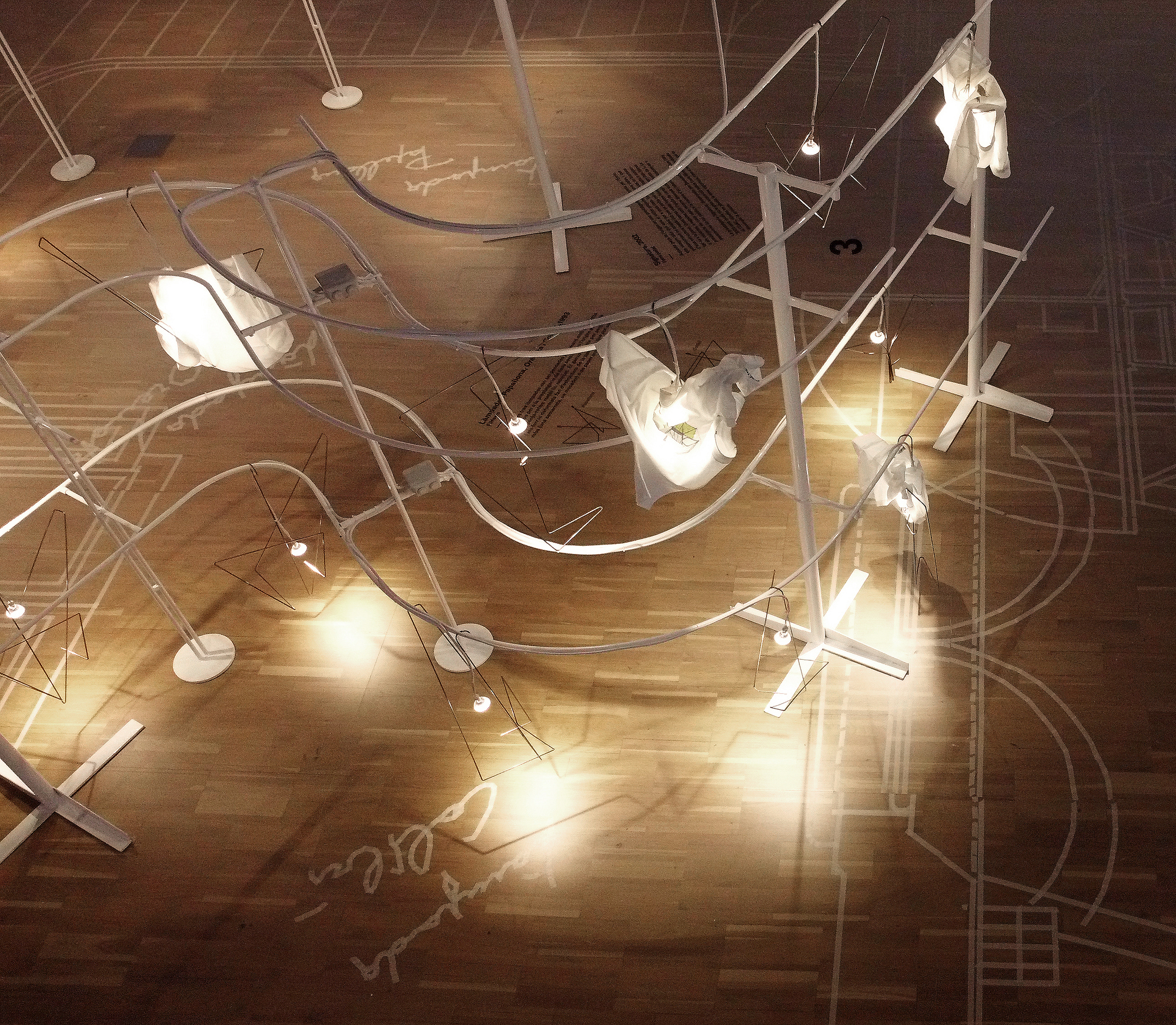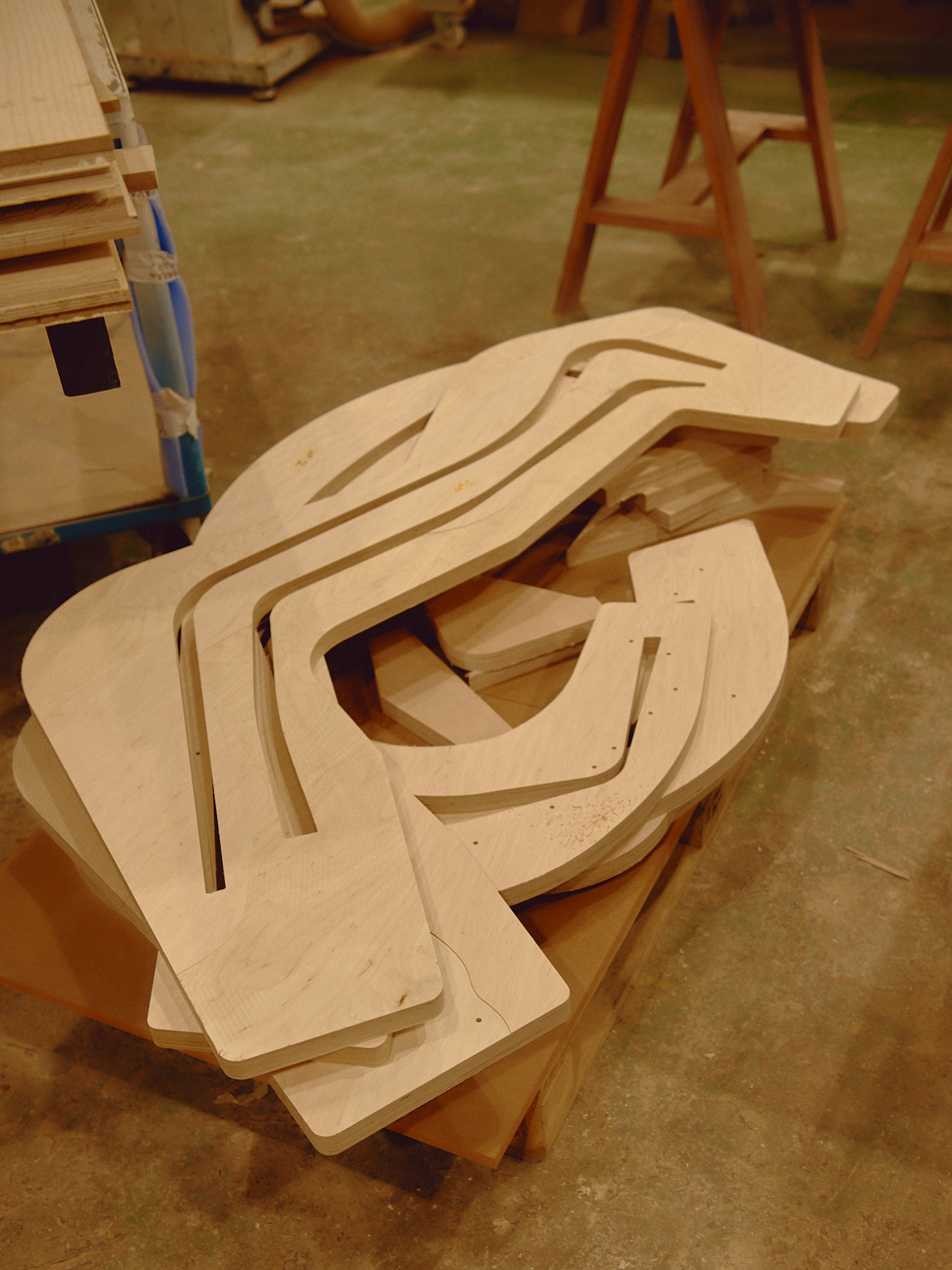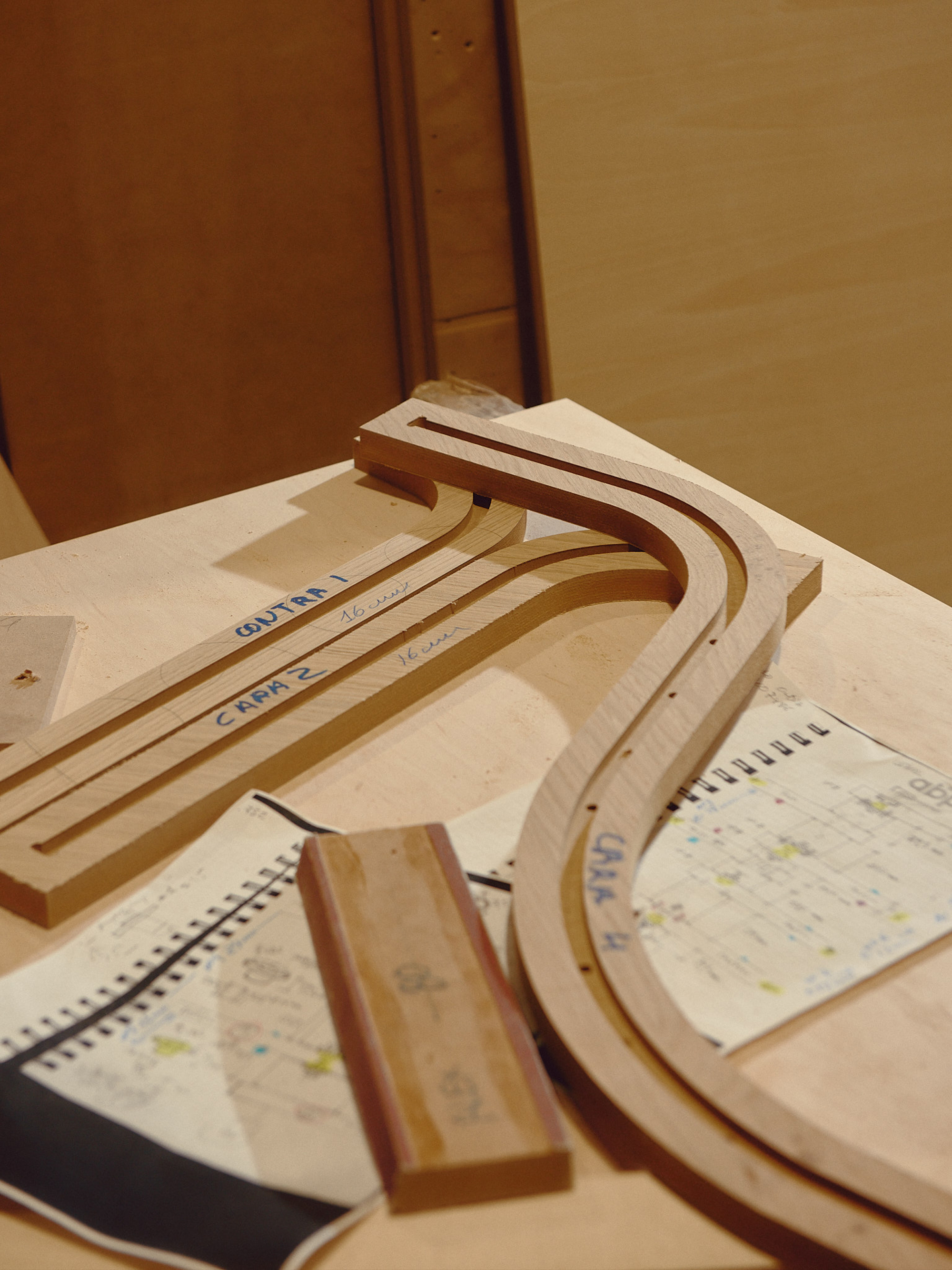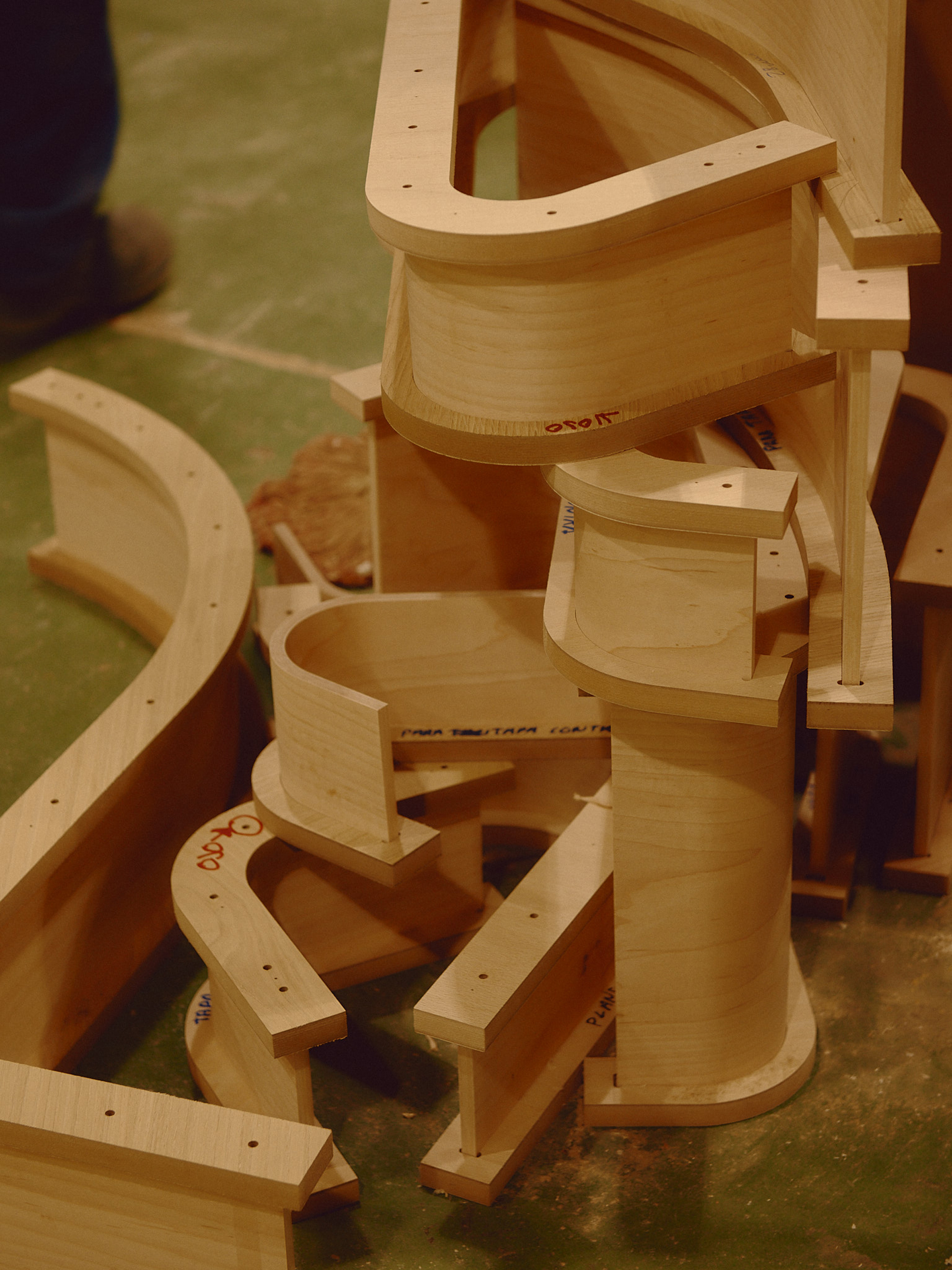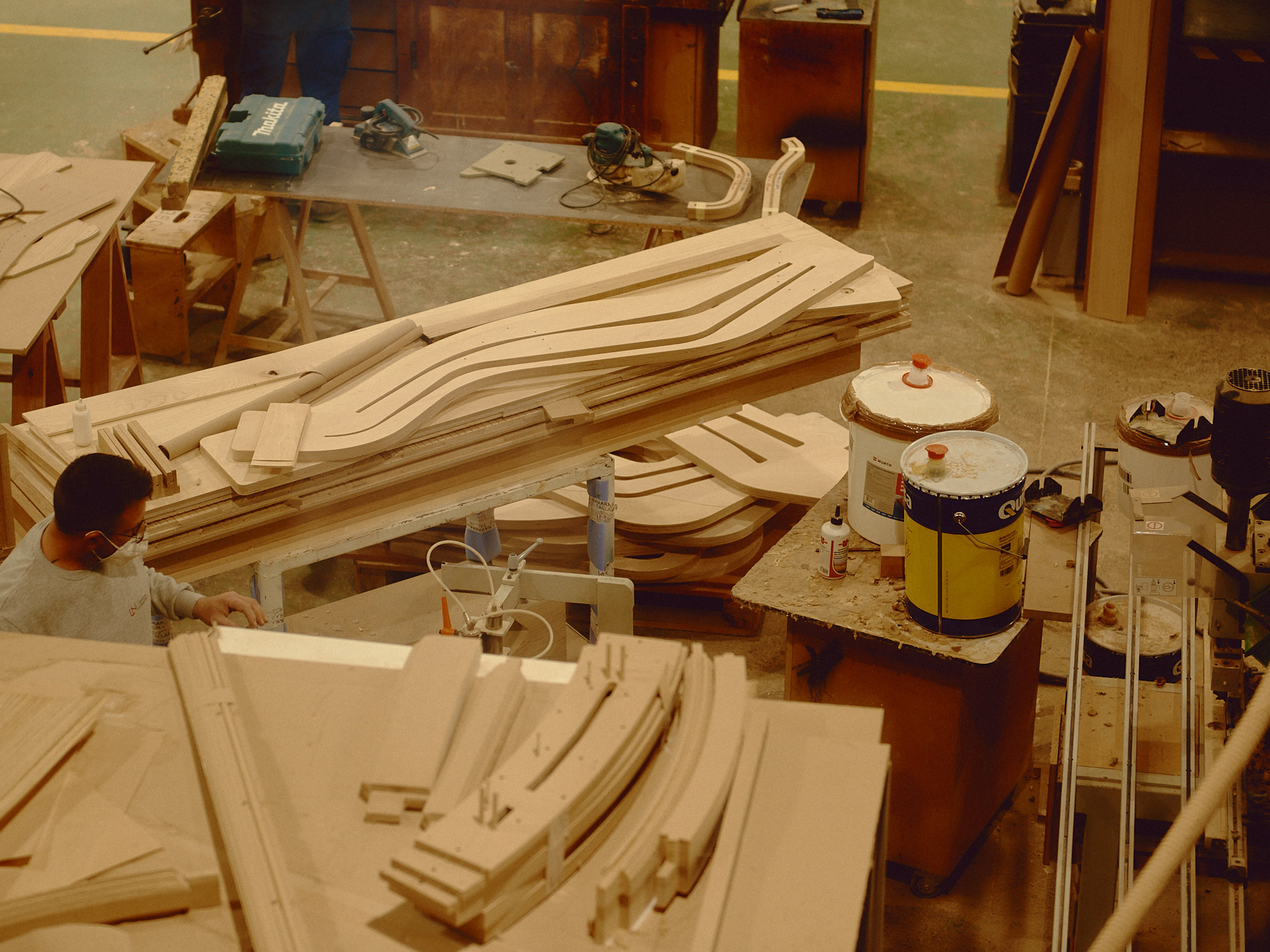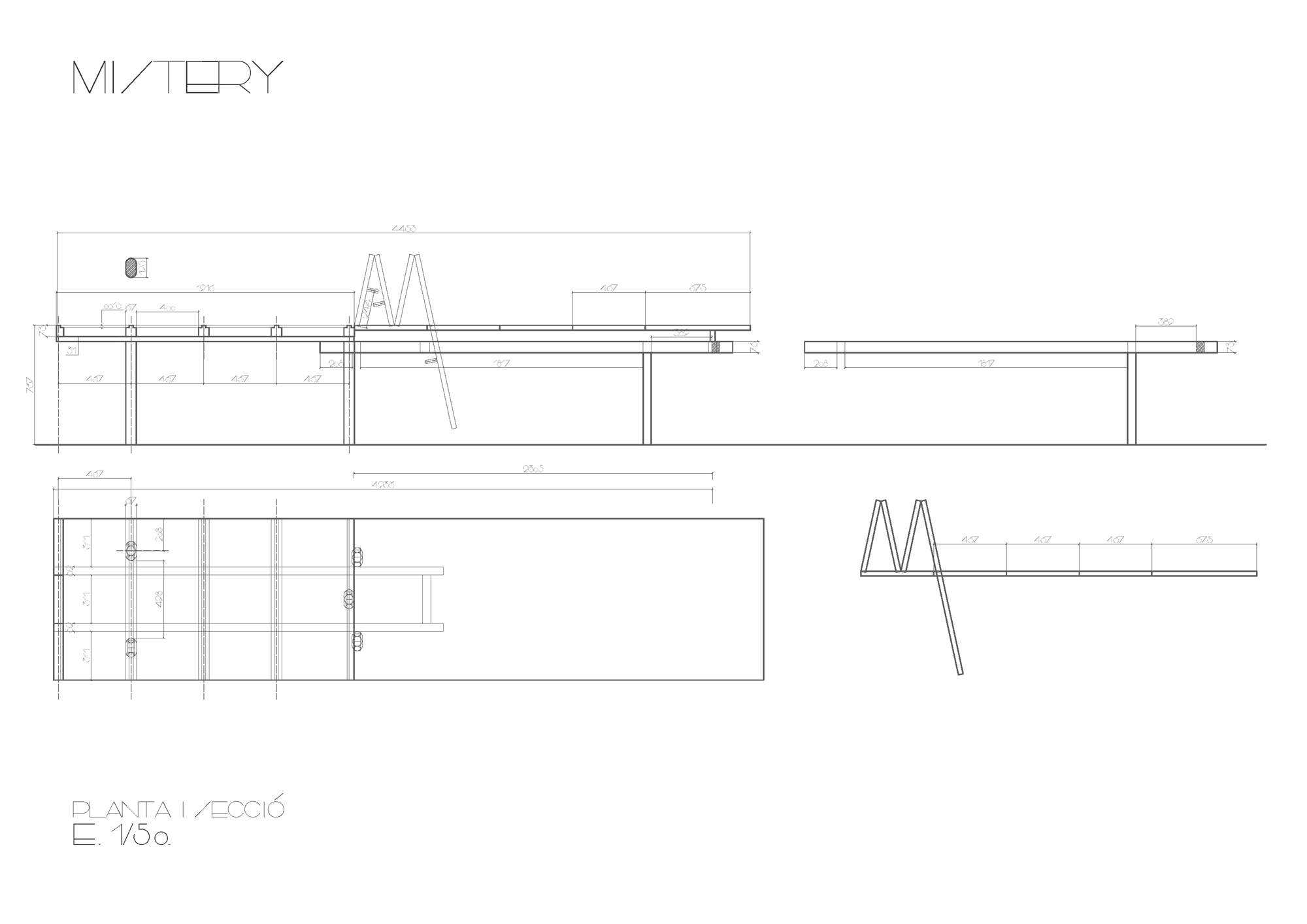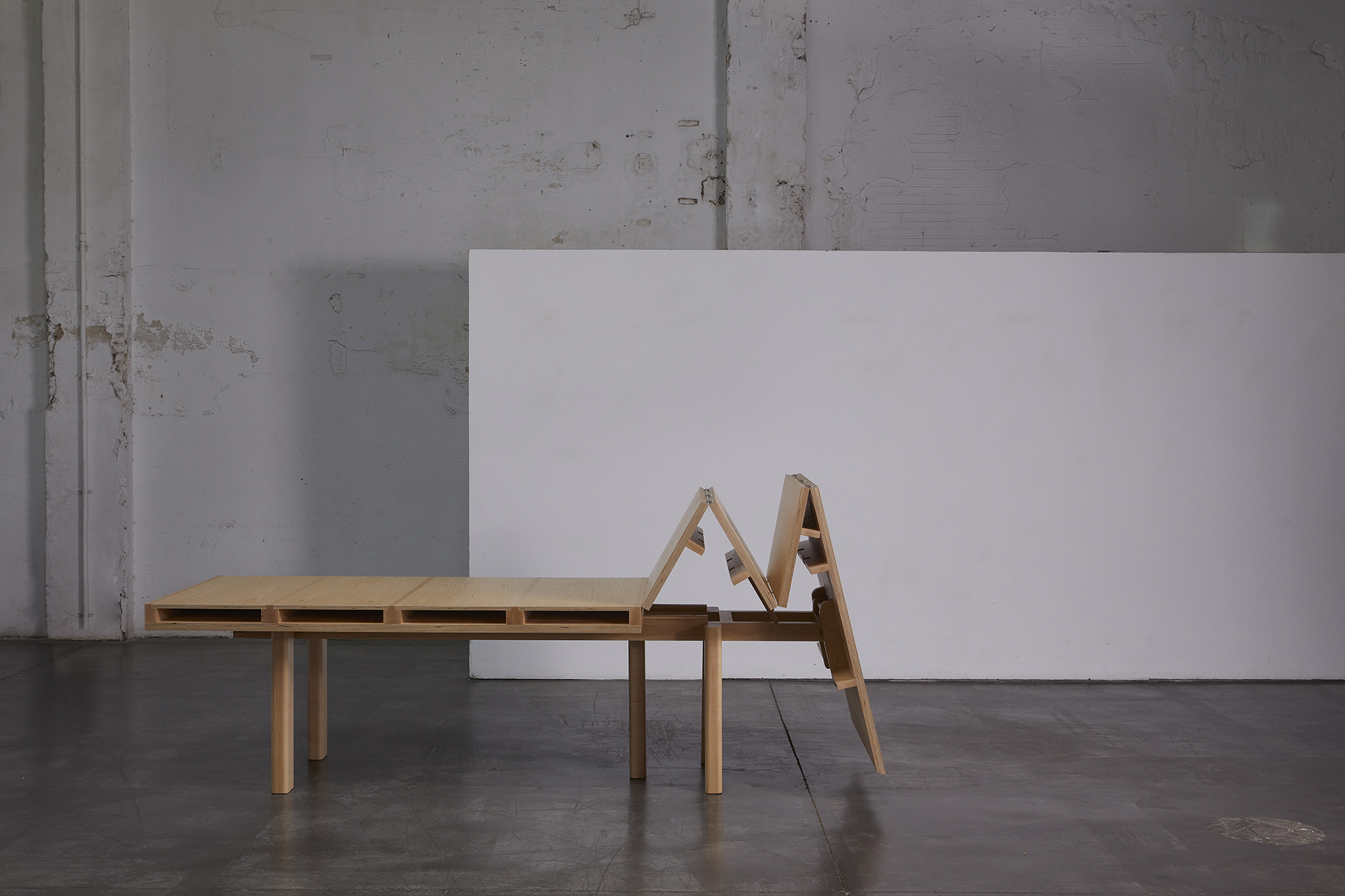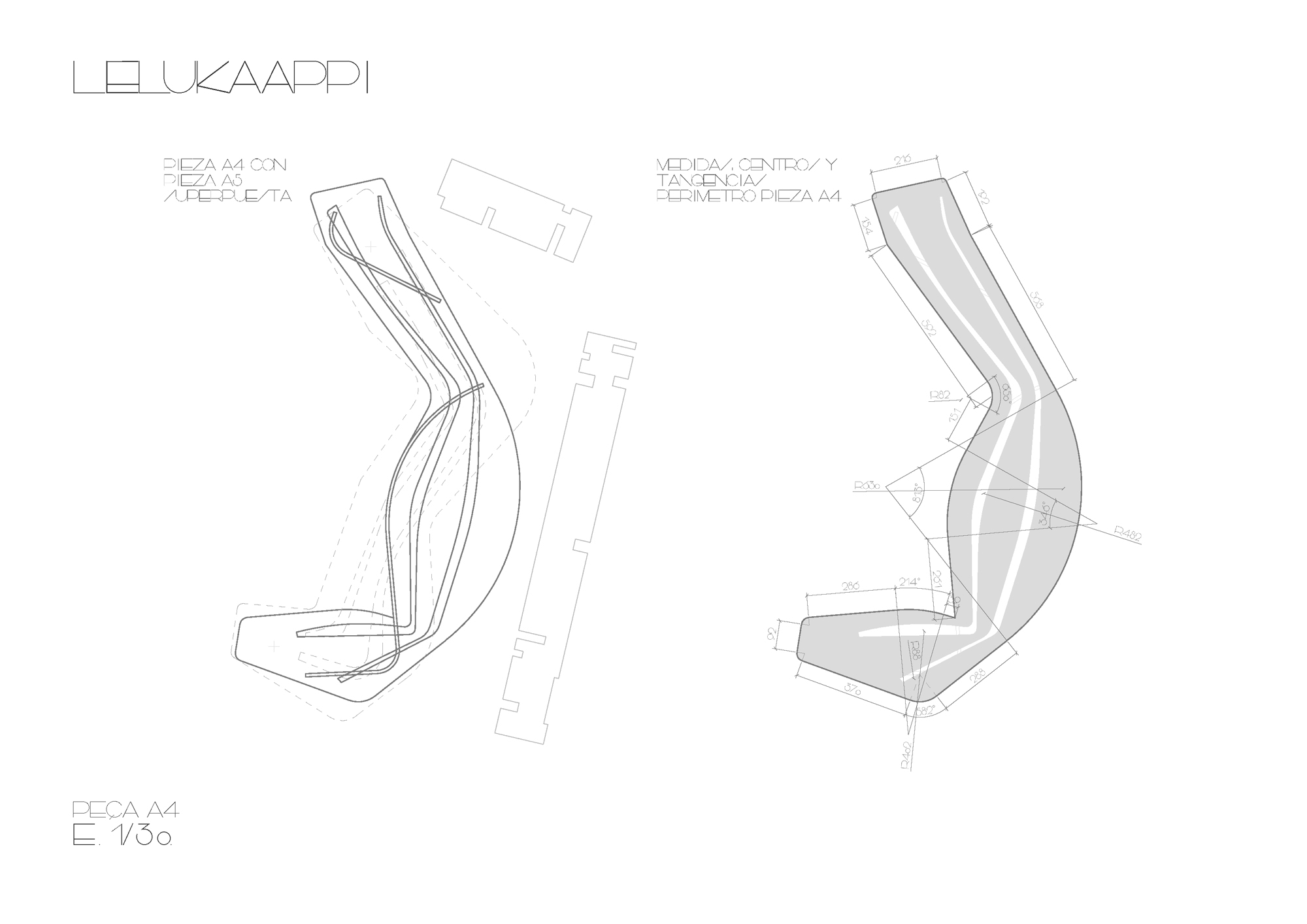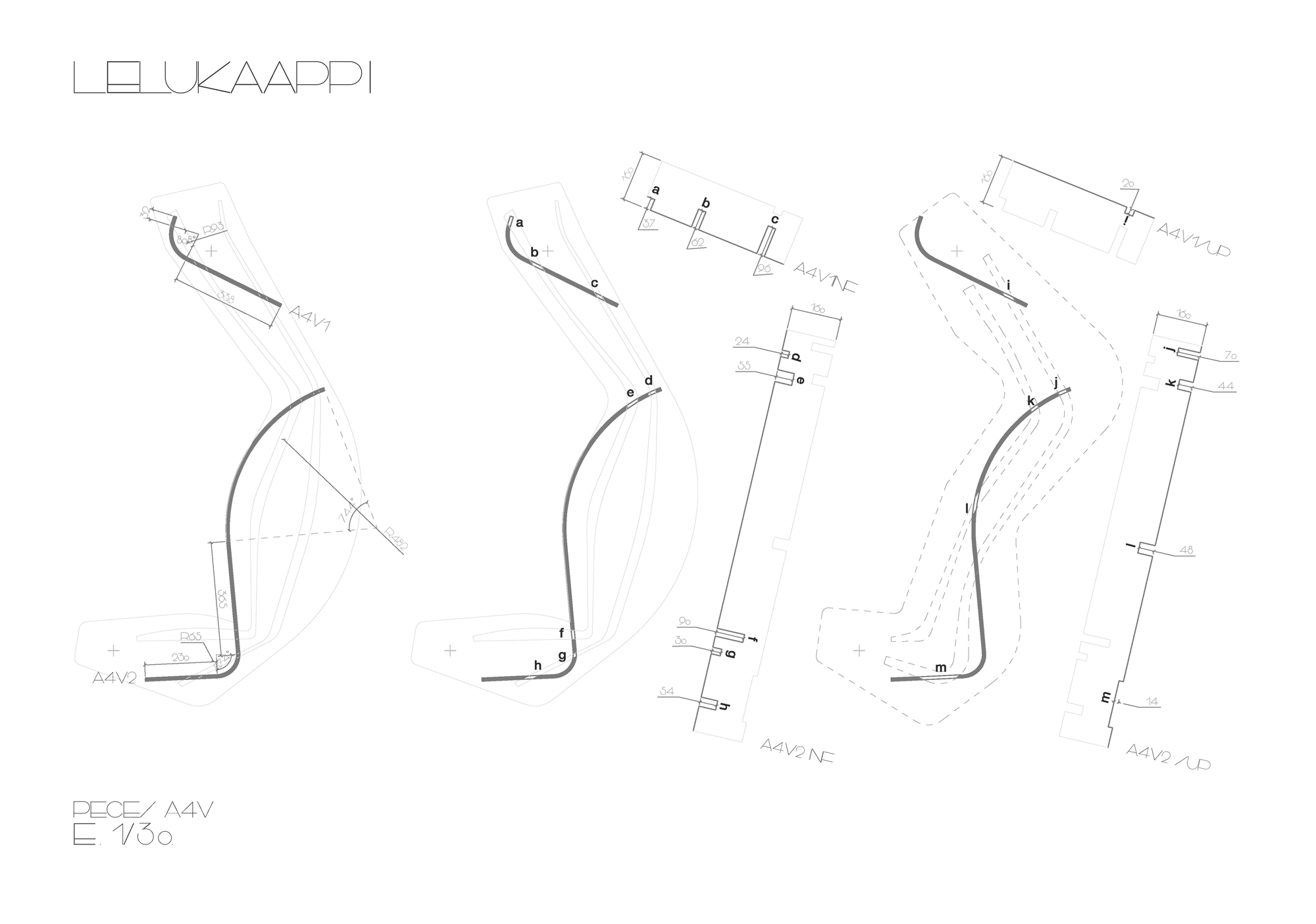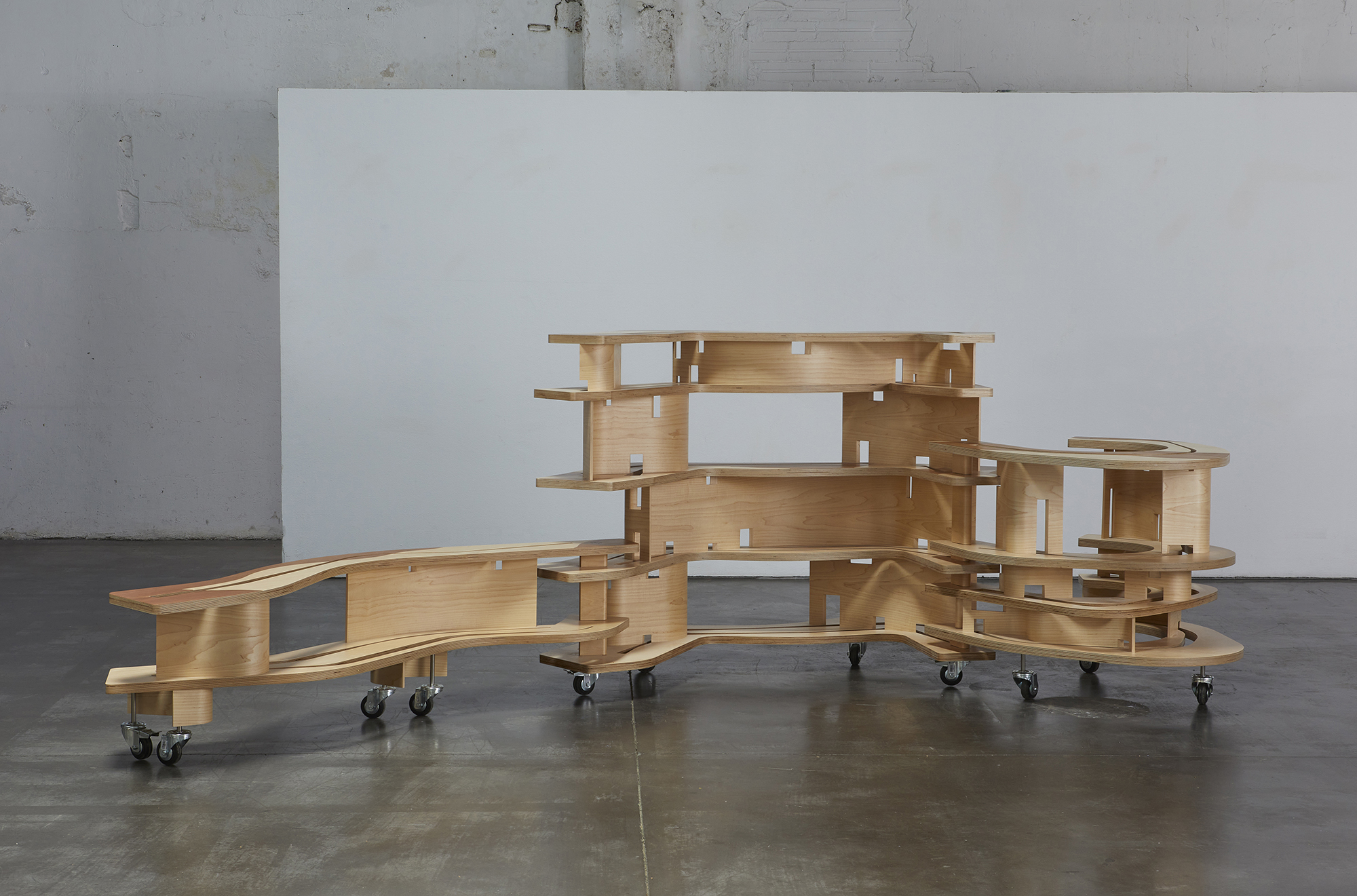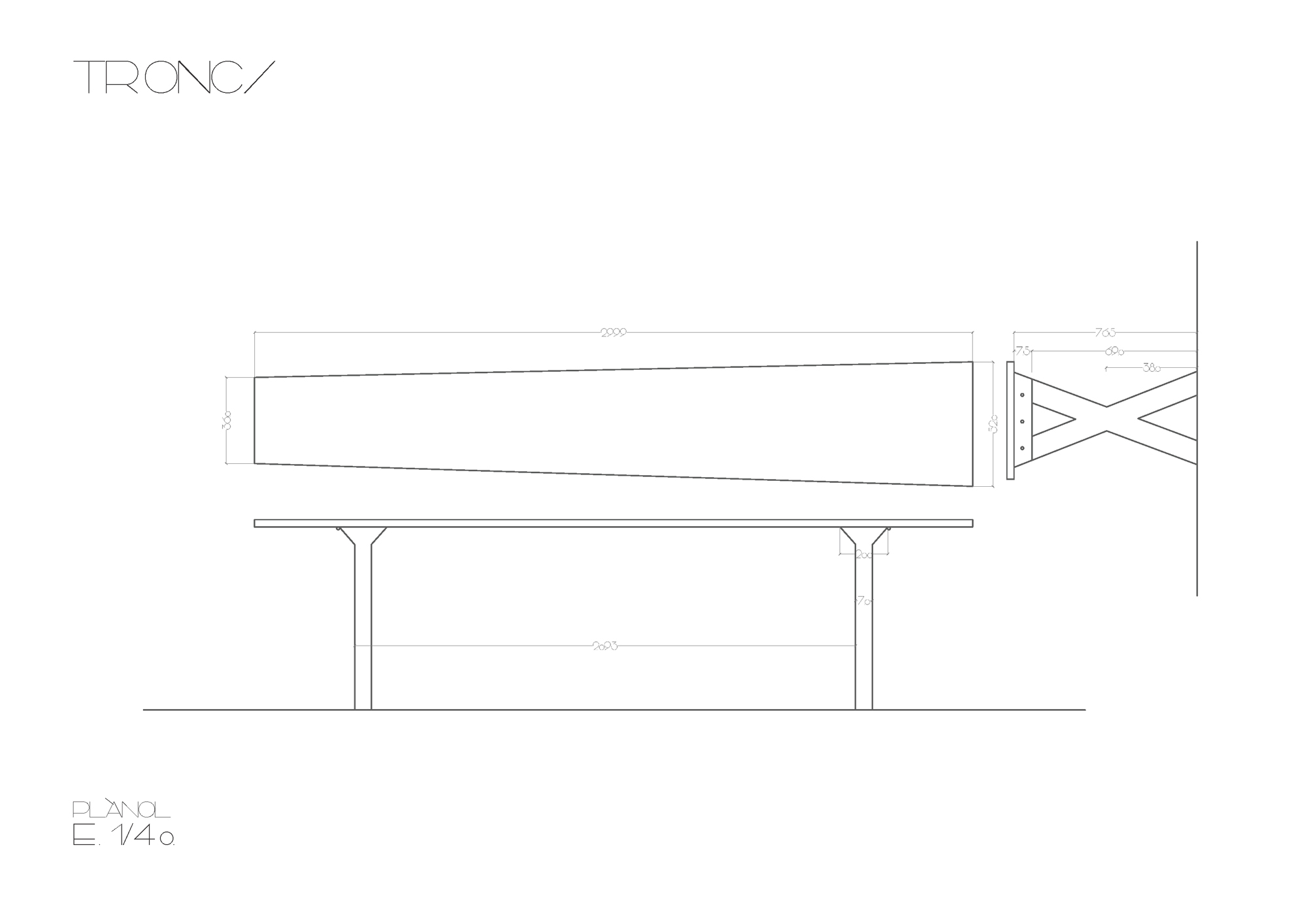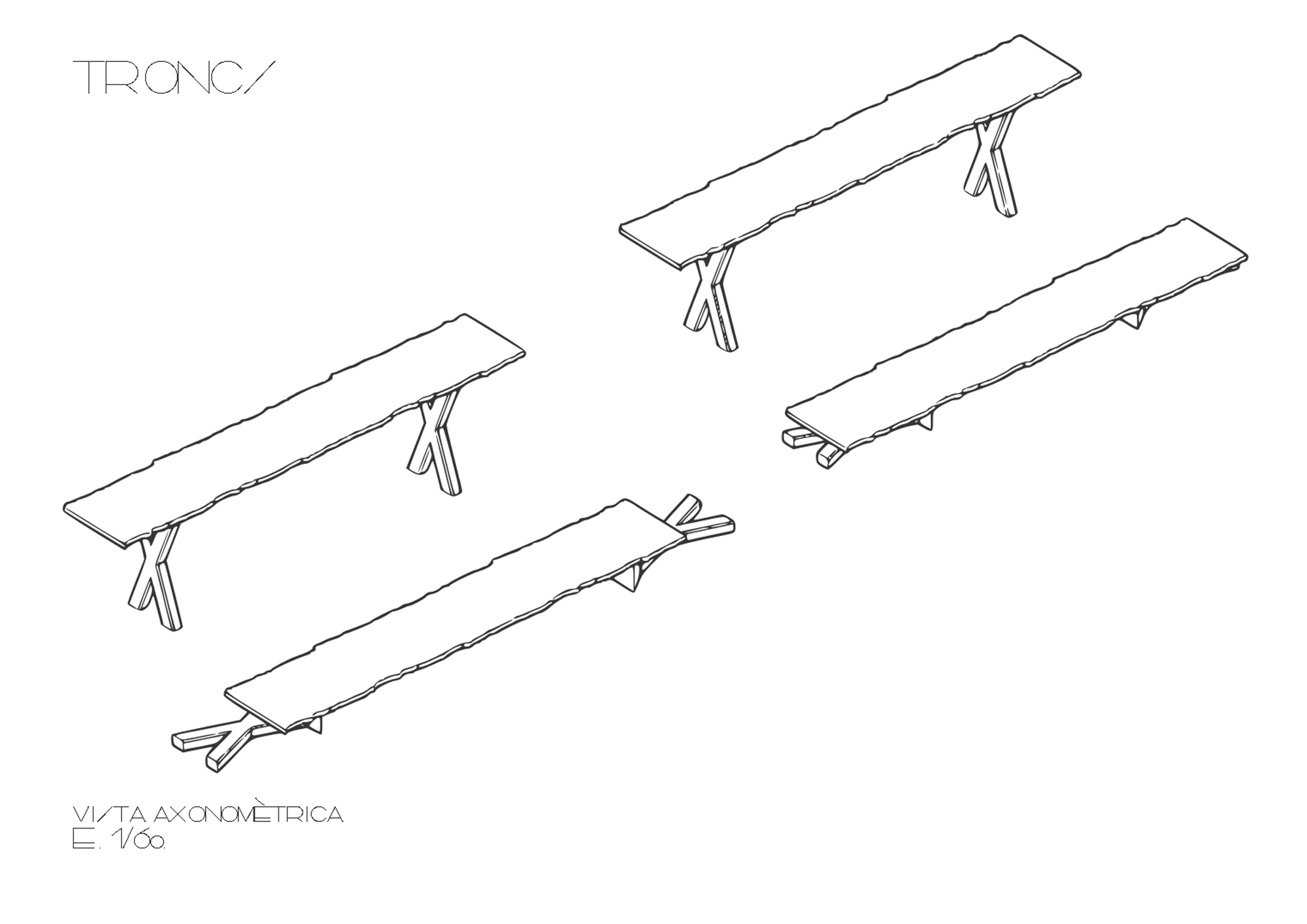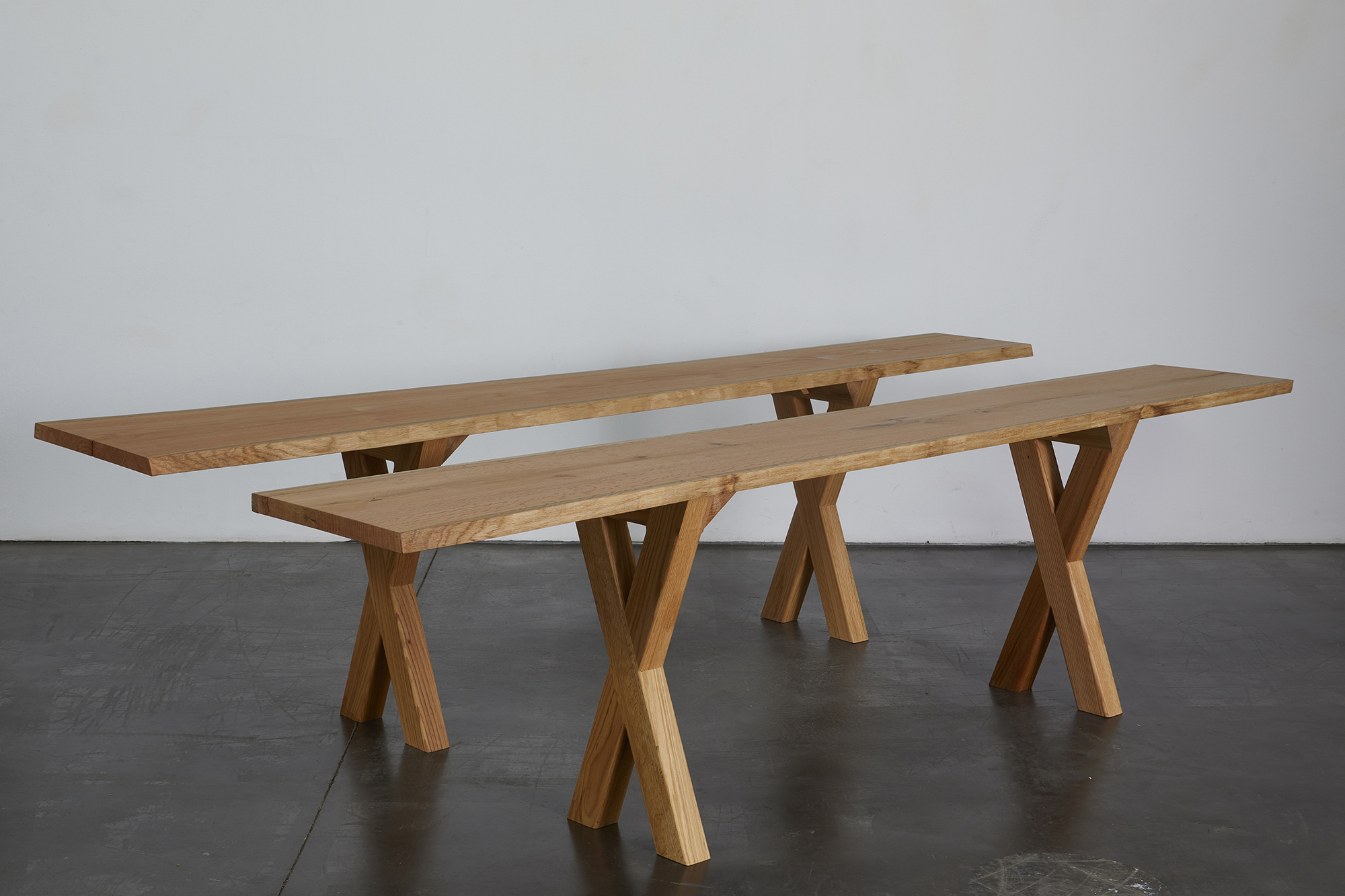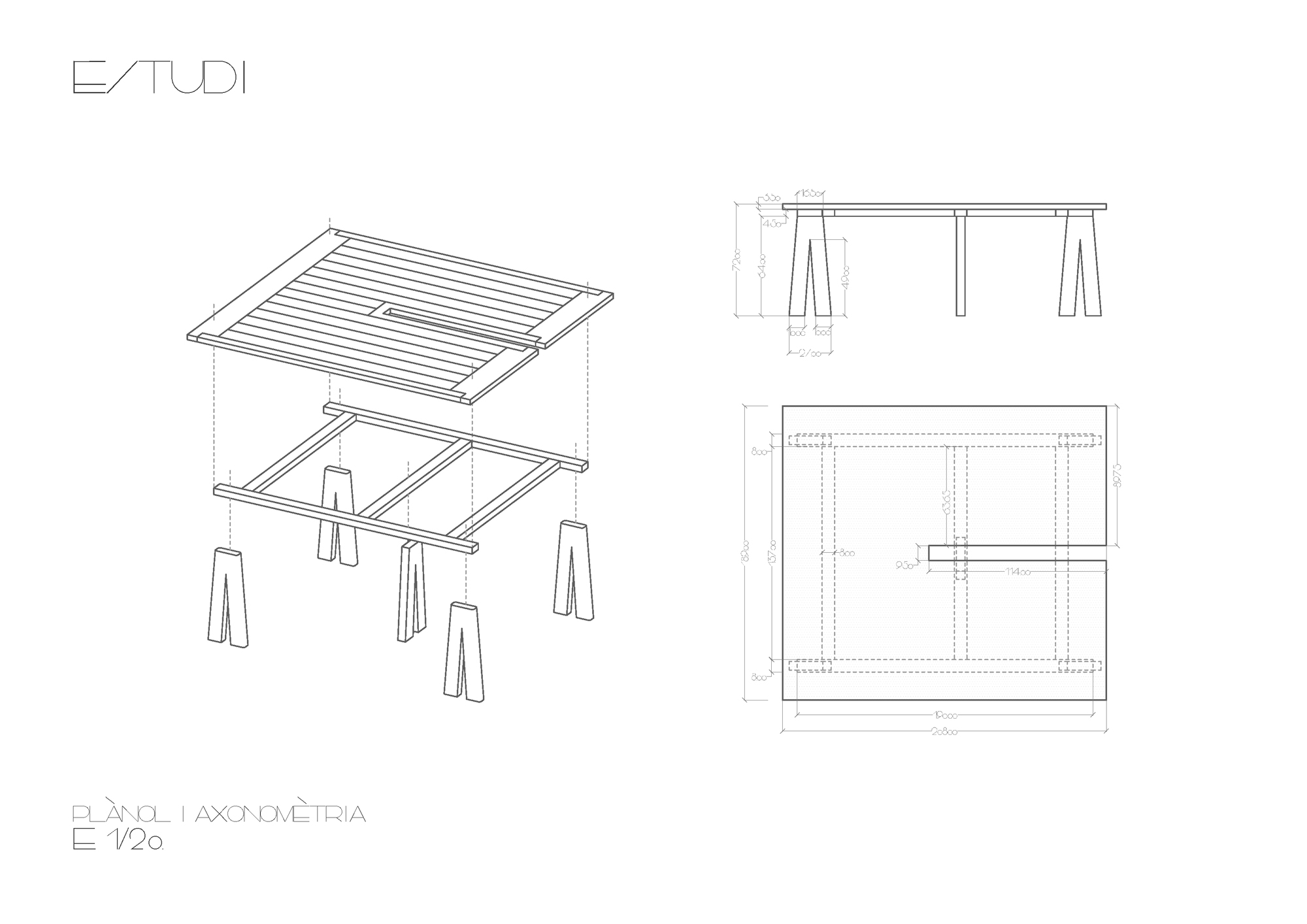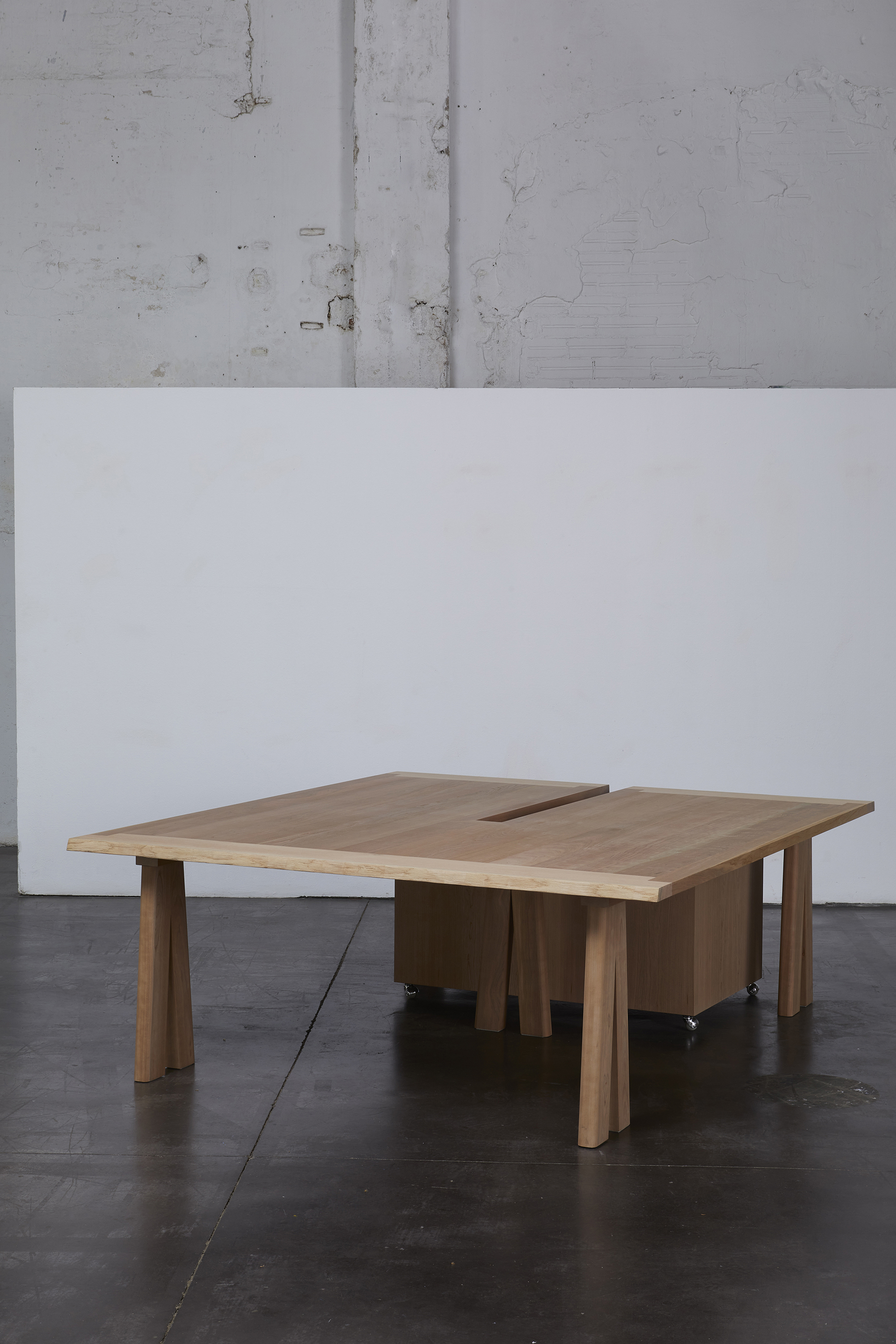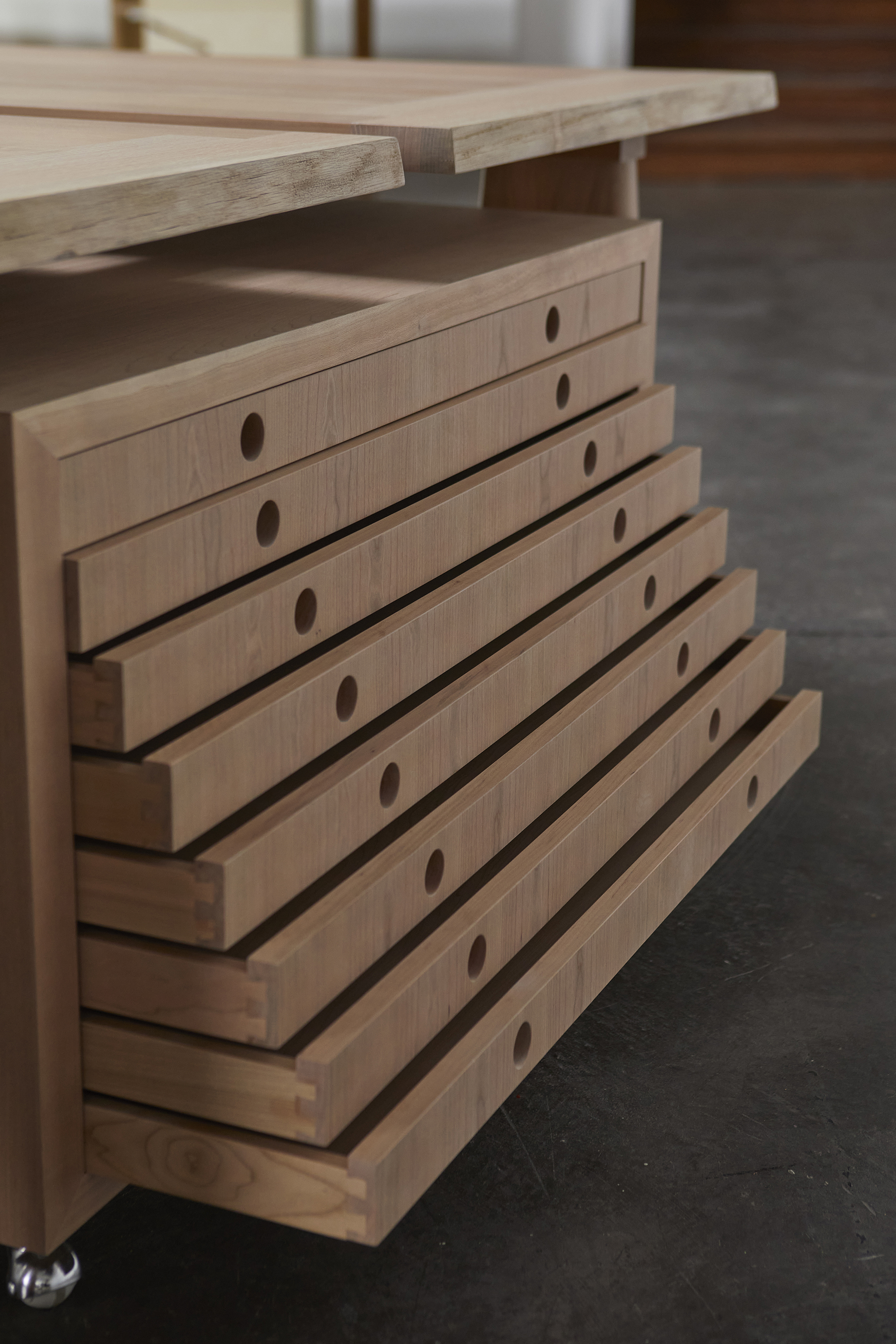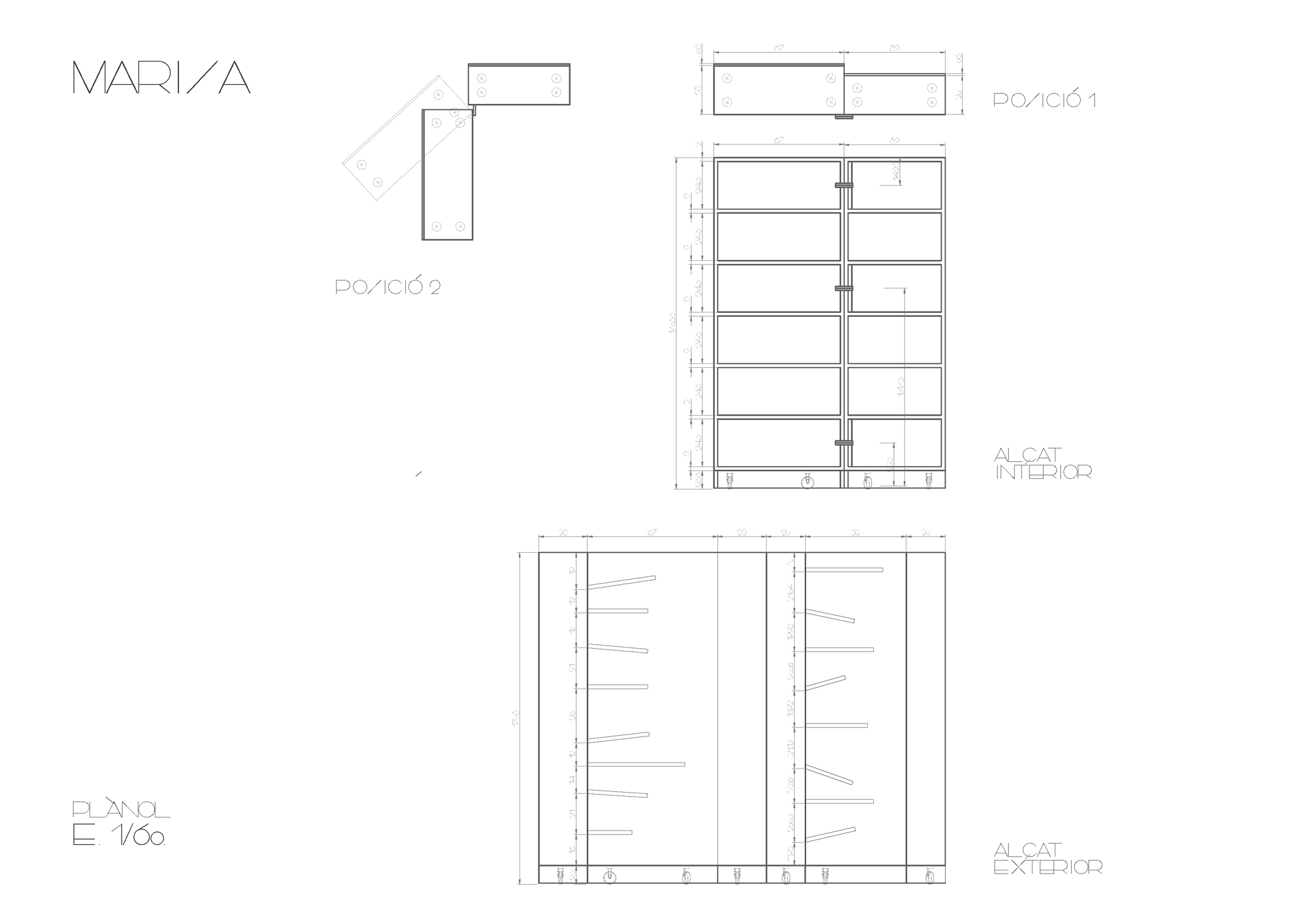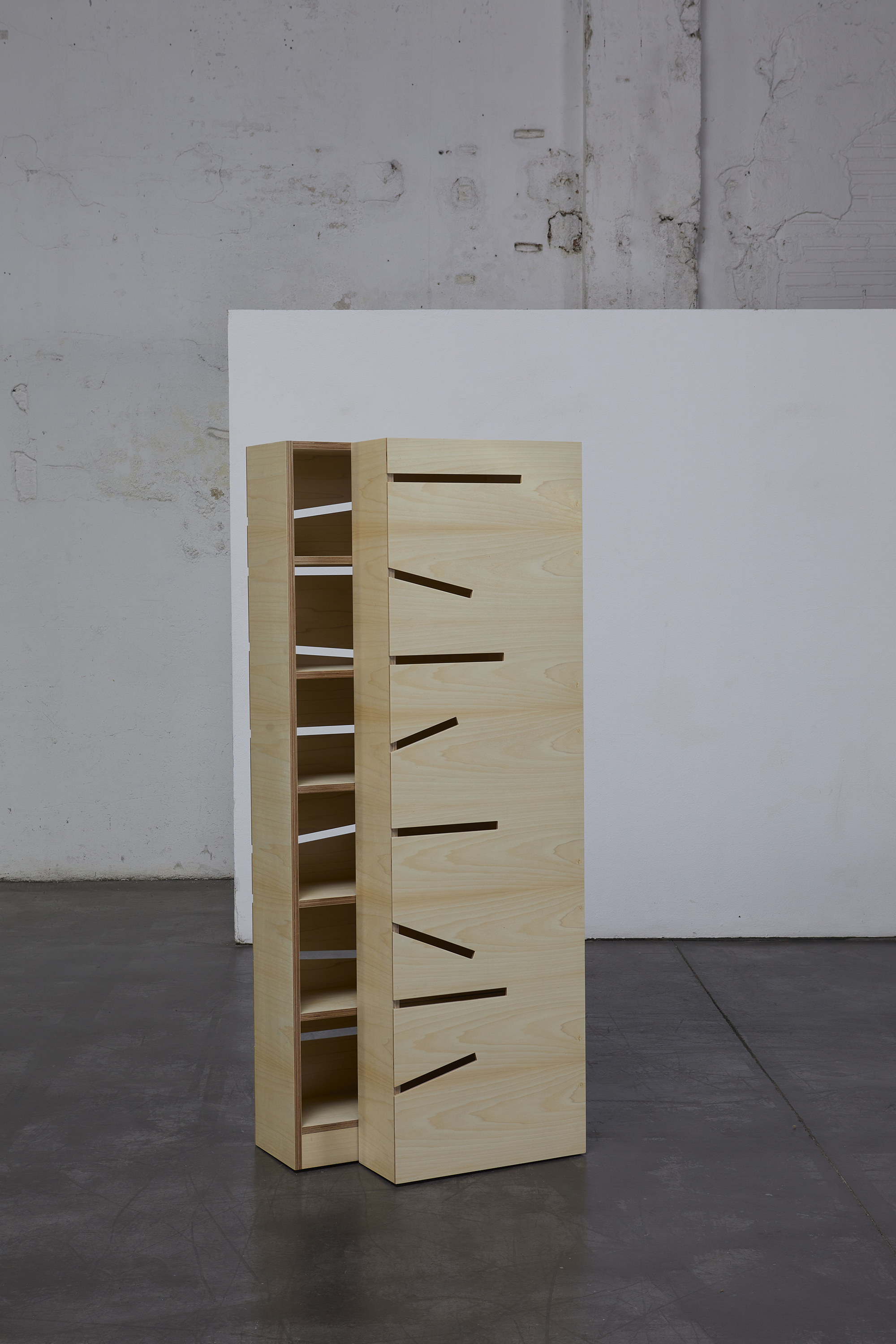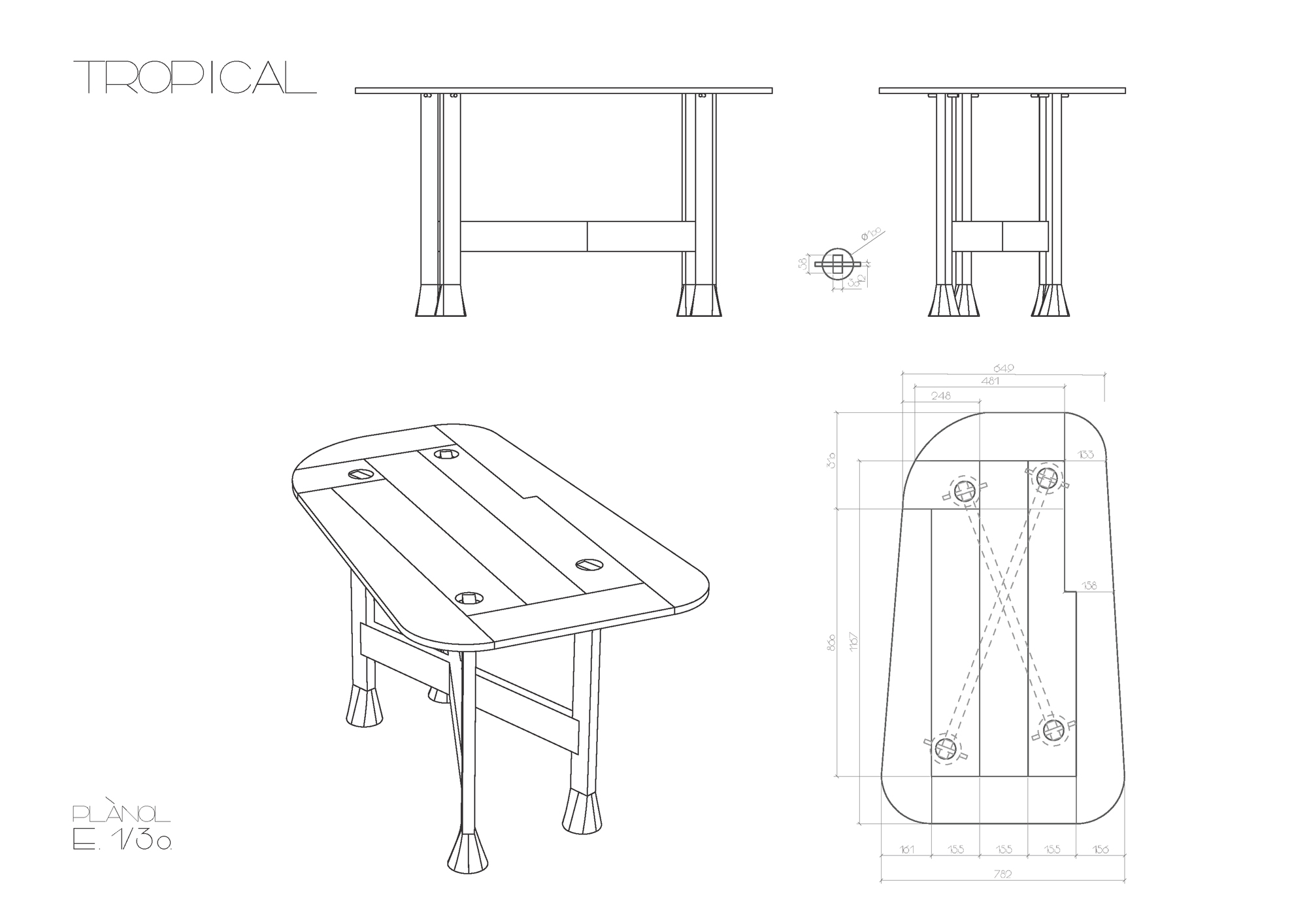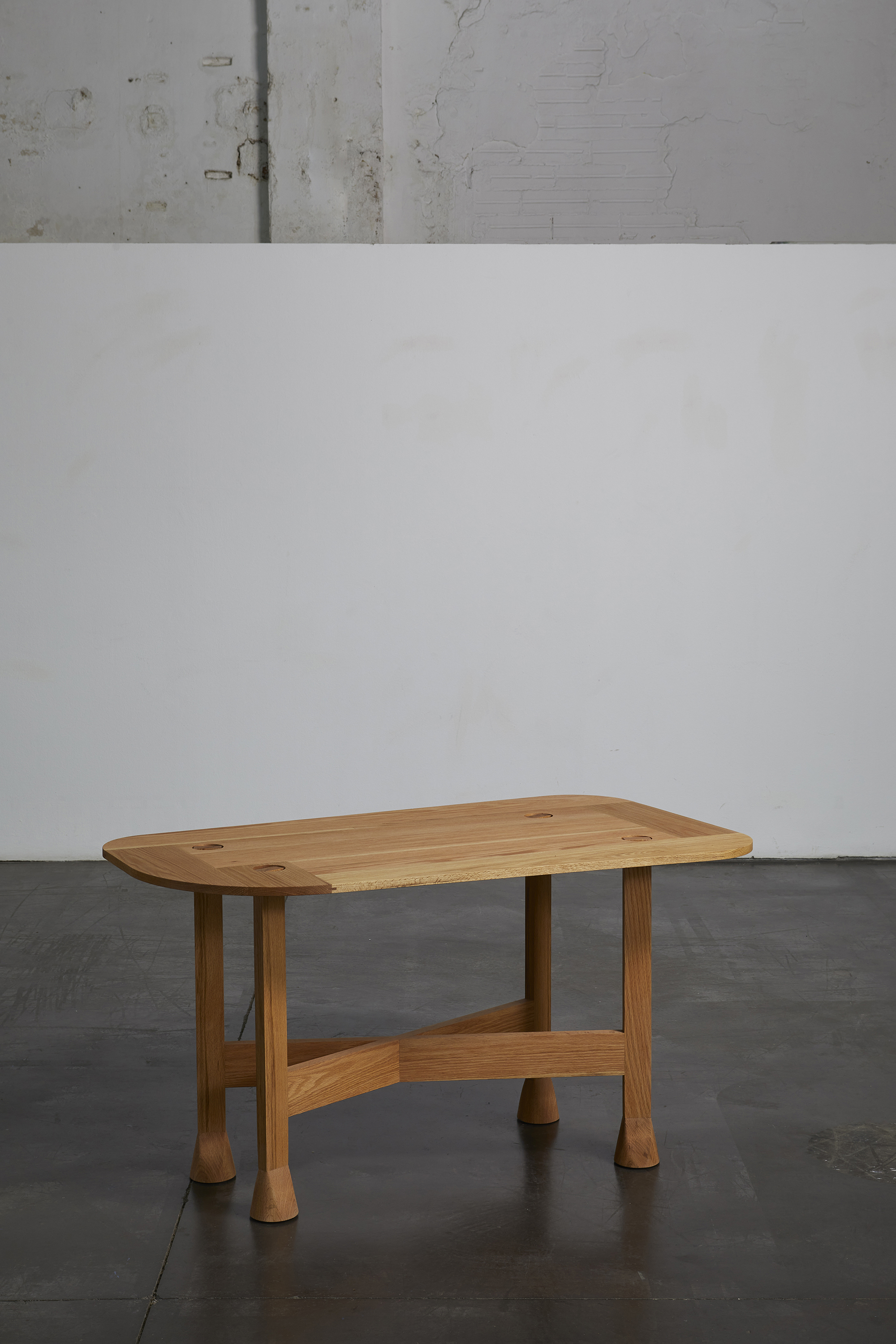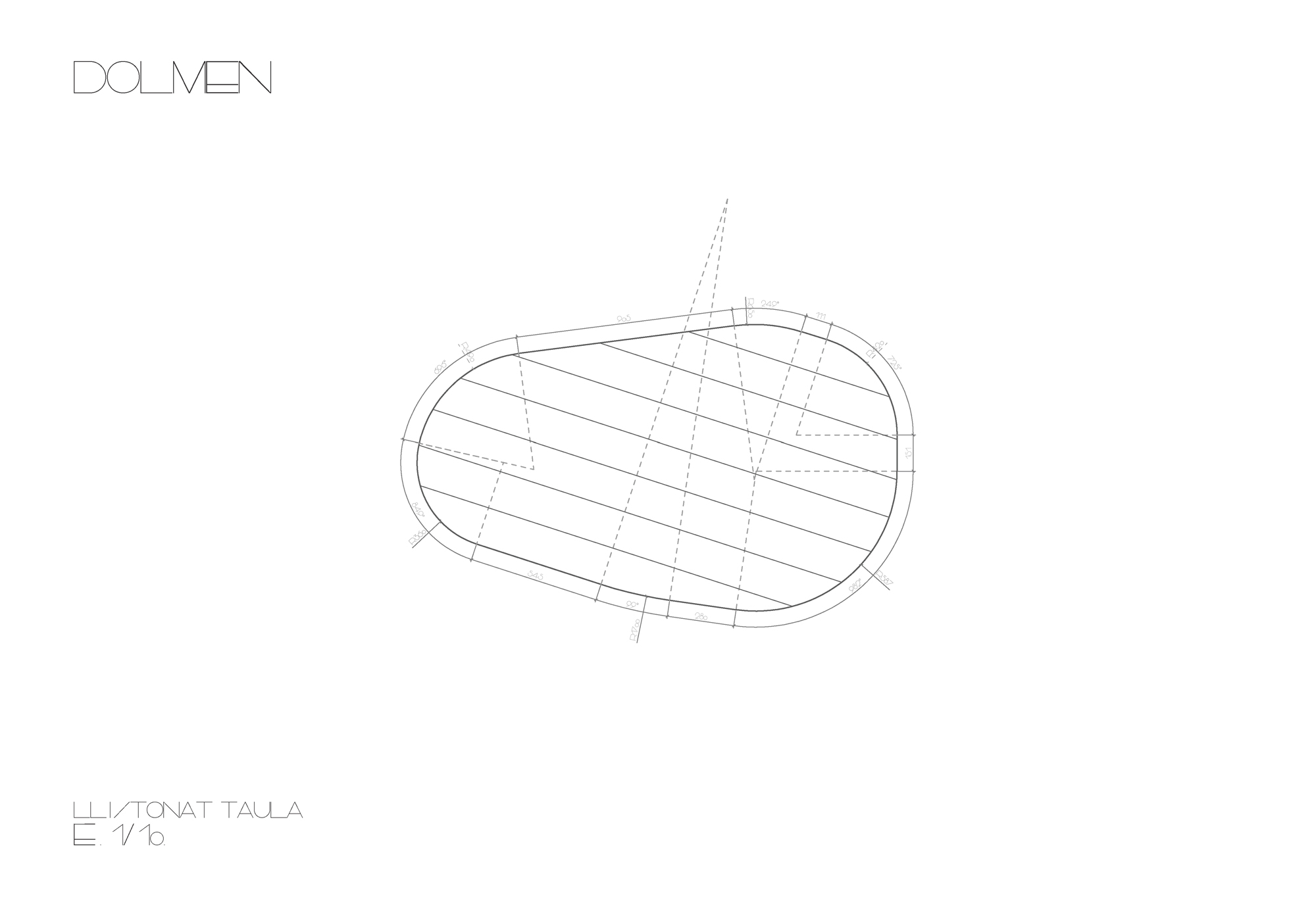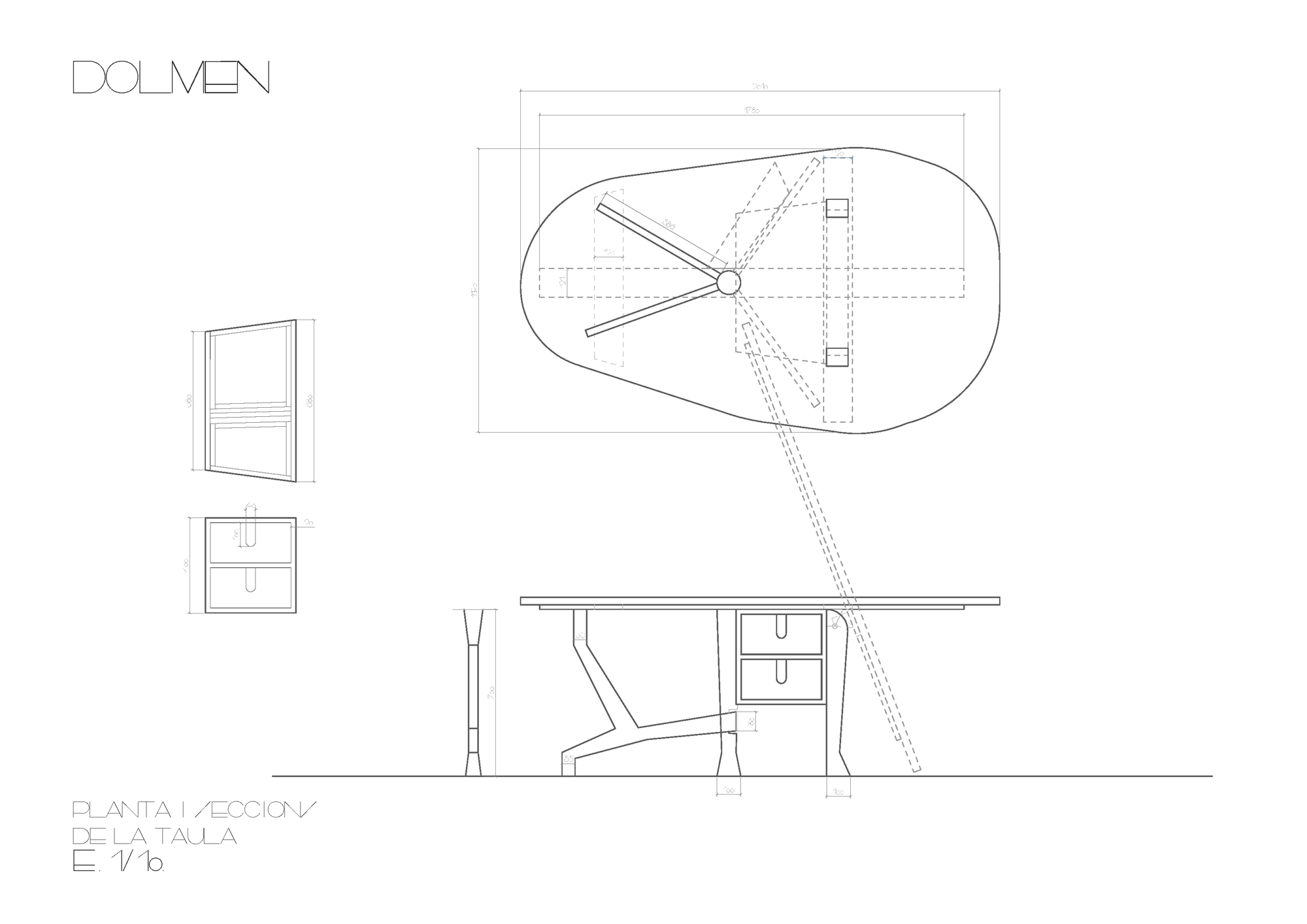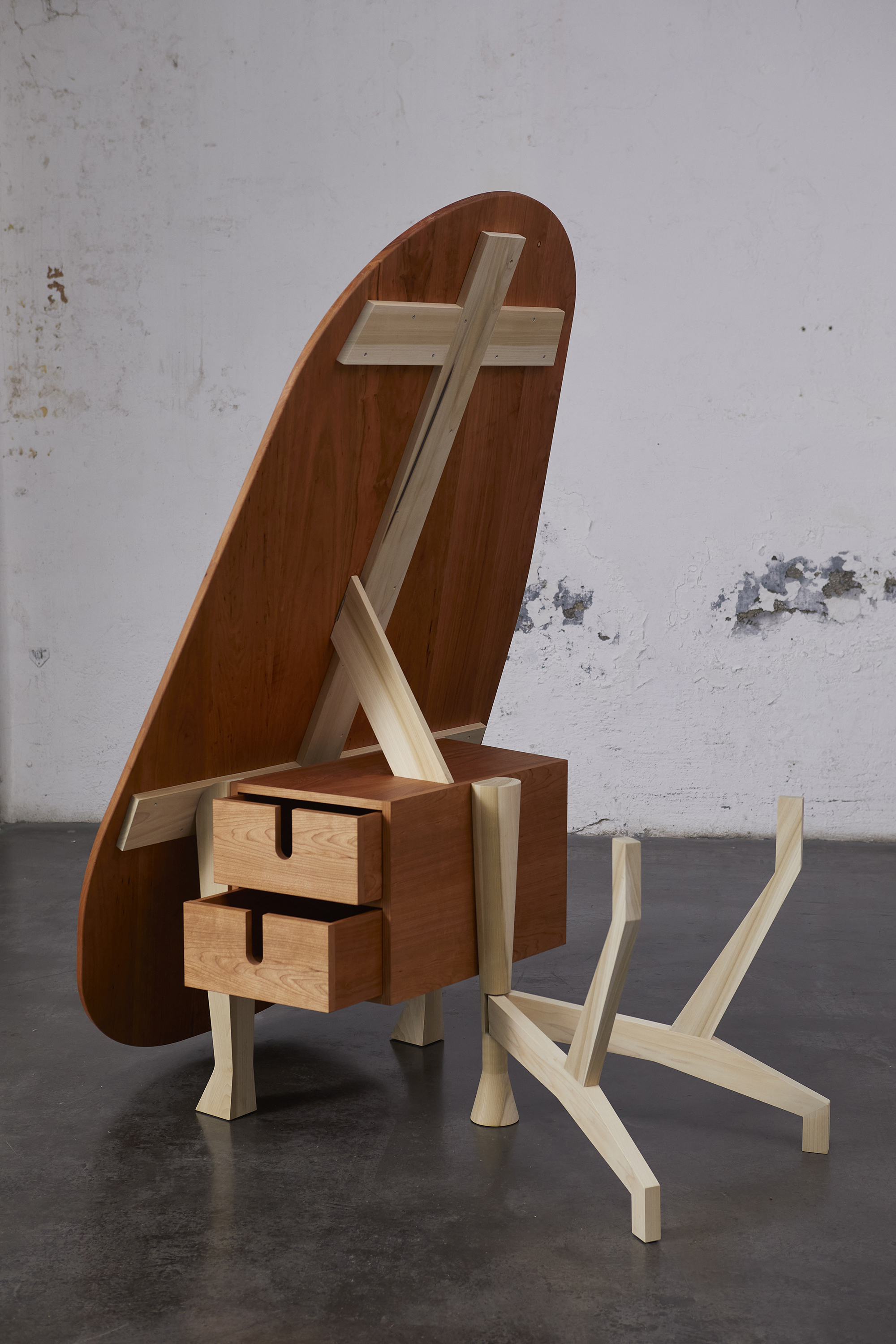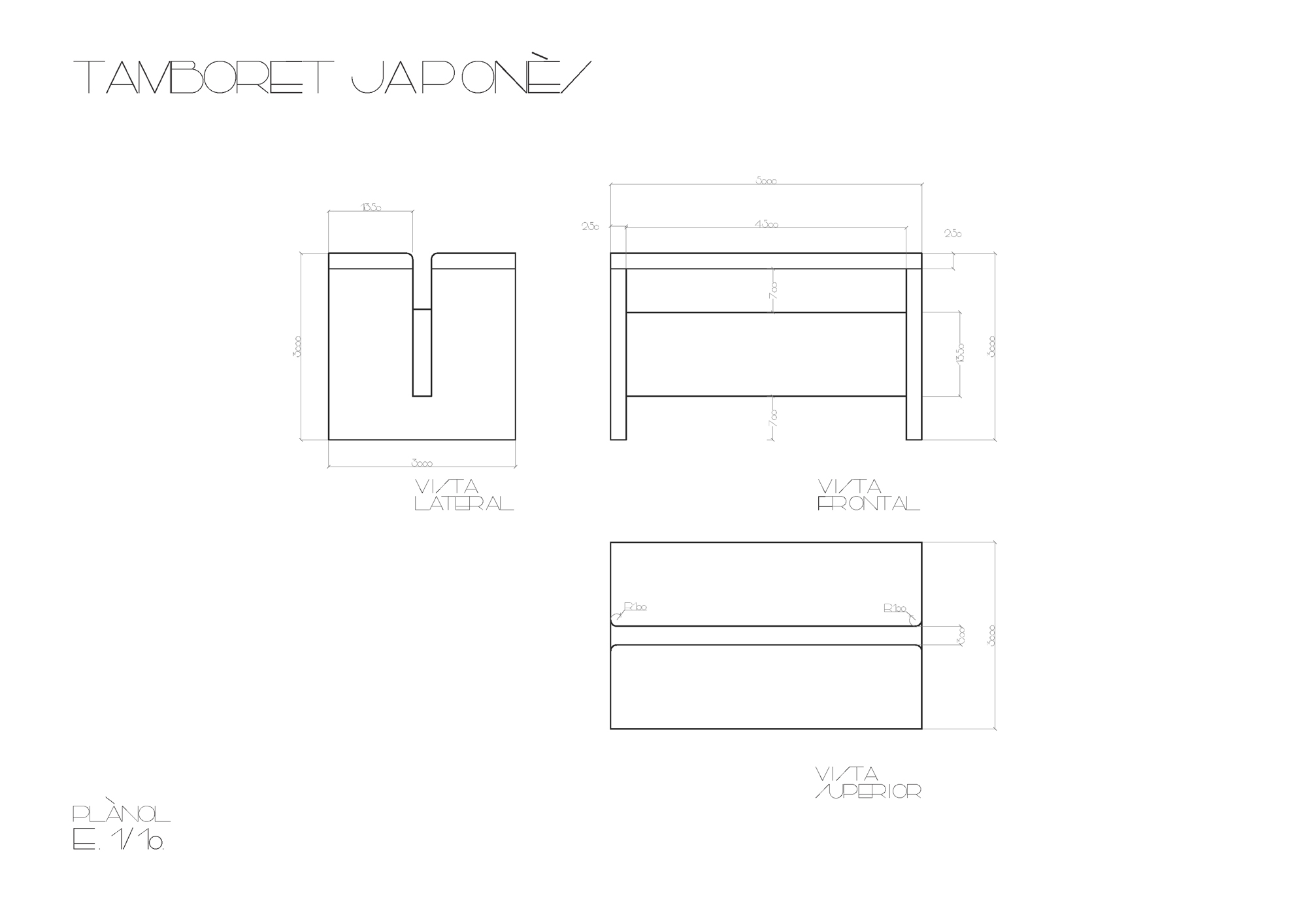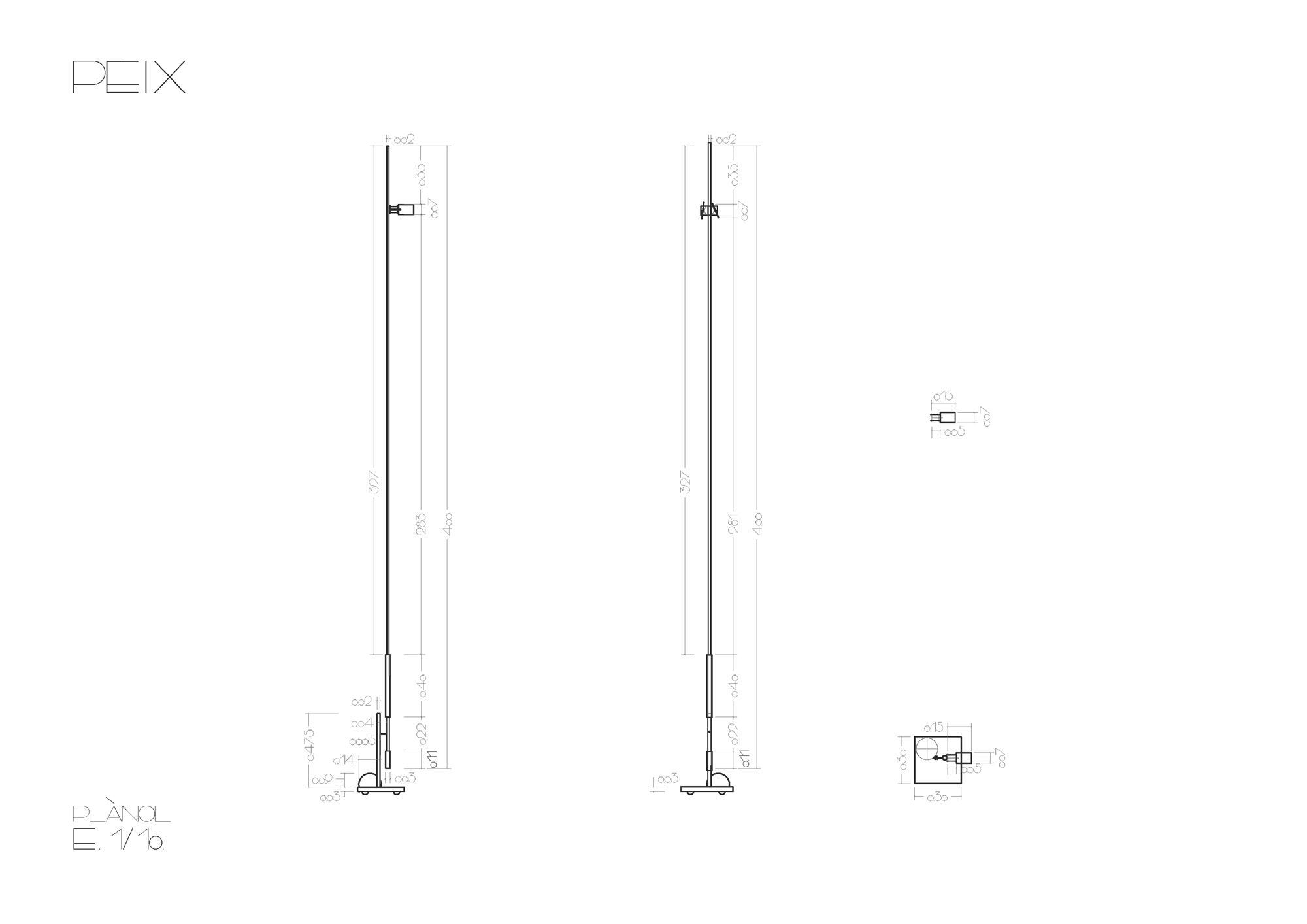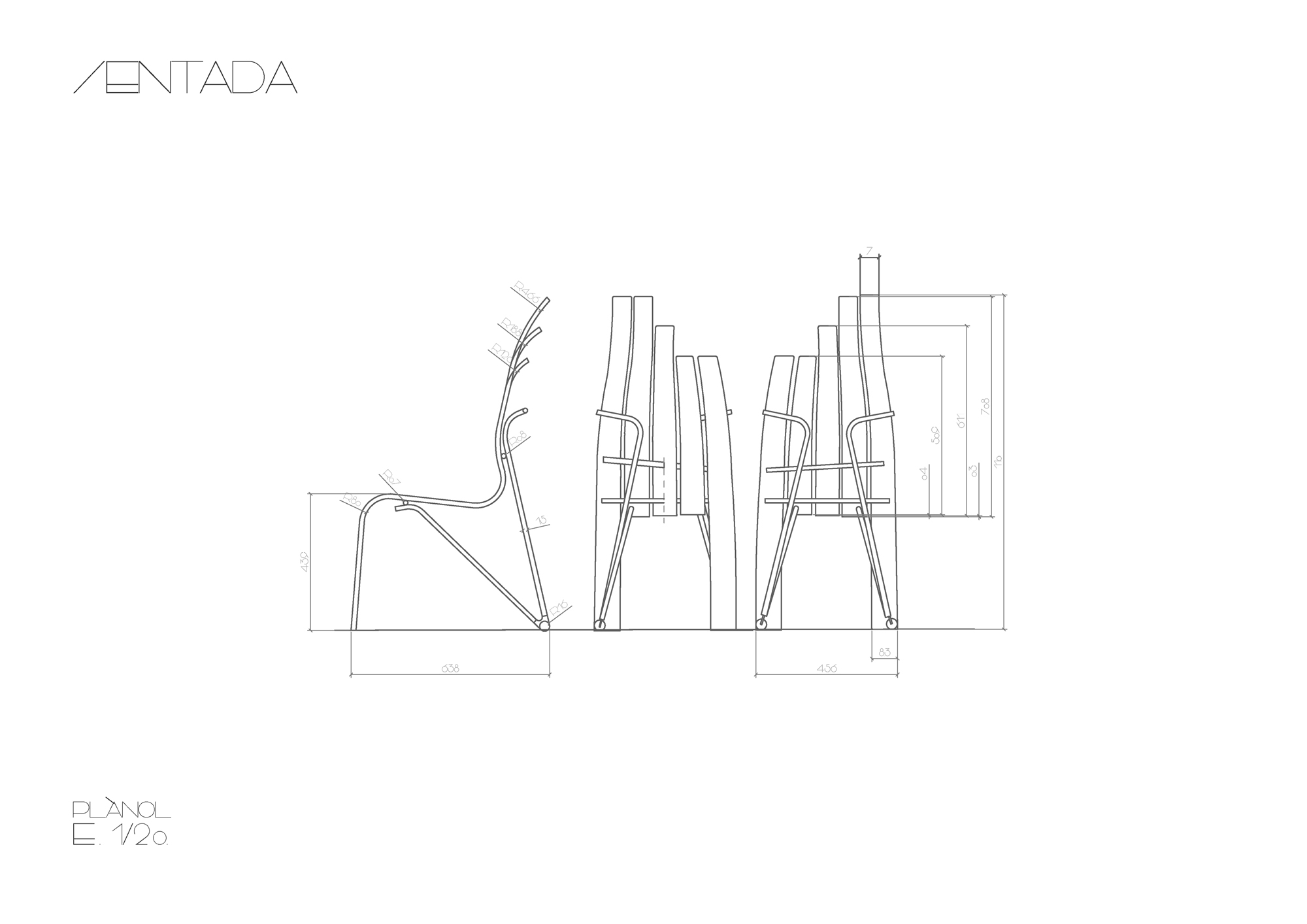Perpetuum Mobile – The Dancing Furniture of Enric Miralles & Benedetta Tagliabue
The Perpetuum Mobile exhibition revealed Enric Miralles’ secret life as a furniture designer. It is hard to imagine what this great Spanish architect might have achieved had he not passed prematurely in 2000, aged just 45, four years before the opening of his largest project, the Scottish Parliament Building. Perpetuum Mobile offers an extraordinary insight into Miralles’ creative vision, approach to form and sense of invention – not only through the buildings created for his clients, but through the furniture he designed for his home.

© Paolo Fassoli
Showing as part of “INTERNI Design Re-Generation” at the University of Milan, “Perpetuum Mobile – The Dancing Furniture of Enric Miralles & Benedetta Tagliabue’s home”, brings together recreations of nine furniture pieces and objects that Enric Miralles designed alongside his partner Benedetta Tagliabue for their home in Barcelona, Spain. An old warehouse where walls were knocked down to create an open space, the home of Miralles and Tagliabue imagined a ‘house in motion’, where not even furniture had a fixed place or form. Each piece is unique can be moved or modified to meet the needs of the moment.
The exhibition provides a unique insight into the detail and craft of the architects’ domestic environment, including a recently discovered piece, produced for the first time in 2020.

© Paolo Fassoli

© Rafael Vargas

© Rafael Vargas

© Rafael Vargas
While Enric Miralles and Benedetta Tagliabue’s projects have been exhibited extensively, the unique domestic landscape of their Barcelona home was publicly shown for the first time as part of the 2021 Homenatge MIRALLES at DHub in Barcelona, and later brought to this exhibition in Milan.
The exhibition includes the reproductions of tables, seating and shelving designed between 1992 and 1999, but never put into commercial production.
The nine pieces featured were meticulously recreated in the EMBT studio from drawings and documents from Miralles’ private archives, and crafted by Madrid-based carpentry workshop La Navarra. The materials were reconsidered in close collaboration with AHEC in sustainable hardwoods. In place of the elms, irokos, bolondos and birch plywoods available to Miralles at the time, often left over from his building projects, the new pieces were made using four underused American hardwood species – red oak, maple, cherry and tulipwood – chosen by Benedetta Tagliabue for their aesthetic qualities, environmental performance and credentials.

© Alex Cascallana. Courtesy of AHEC American Hardwood Export Council

© Alex Cascallana. Courtesy of AHEC American Hardwood Export Council

© Alex Cascallana. Courtesy of AHEC American Hardwood Export Council
“The idea is to make the conversation go on. Enric was always very experimental. He had a mind that was never conventional. If you posed a problem to Enric, he would always answer back with a surprising thing. He was special and that is still coming out from the documents you find in his archives.”
– Benedetta Tagliabue, Head architect of Benedetta Tagliabue – EMBT Architects & President of Fundació Enric Miralles.

© Alex Cascallana. Courtesy of AHEC American Hardwood Export Council

© Alex Cascallana. Courtesy of AHEC American Hardwood Export Council
A mystery uncovered
While conducting the research into her husband’s archives, Tagliabue came across a notebook containing a drawing of a table she didn’t recognise. This turned out to be a new design that Miralles never mentioned to her or had the chance to realise in his lifetime, and likely one of the last pieces he had been thinking about before his death. Thanks to Perpetuum Mobile, the ‘Mistery Table’ was brought to life at last – a drawing table that can be lengthened or shortened with a zigzag folding system, transforming itself from a workspace for one to a 4m dining table for up to 16 people.

© EMBT

Mistery, 1999. Unbuilt. American maple.
© Lander Larranaga. Courtesy of AHEC American Hardwood Export Council
Tables, stools and shelving
“Miralles approached furniture from the point of view of an architect, bringing in a complexity of form often involving movement, that makes many of the pieces so unusual and unique. The idea of furniture having multiple functions, by way of transformation was a key part of his thinking in both his architecture and product design. Furthermore, with these pieces, he was designing for himself, not for a brand or company so there is a strong element of freedom of expression and experimentation within this collection.”
– David Venables, European Director, AHEC

© EMBT
At the Perpetuum Mobile exhibition, The Mistery Table was joined by eight other designs: Inestable (1993) – A large table reproduced in American red oak, comprising several flat boards that can be stood upright, revealing concealed drawers and book rests to aid reading. The rounded perimeter of the table frames a Z-shaped structure that recalls both the ground plan of Barcelona’s Igualada Cemetery and the roofs of Parets del Vallès, as well Miralles’ own initials, E and M.

© EMBT

© EMBT

Inestable, 1993. Original pieces in iroko (home version) / oak (studio version) Reproduction in American red oak. © Lander Larranaga. Courtesy of AHEC American Hardwood Export Council
Lelukaappi (1995) was commissioned by the Alvar Aalto Symposium in Jyväskylä, Finland. It was originally designed for a play centre at Mollet del Vallès, and is almost a microcosm of that building. This shelving unit is made of three articulated units of horizontal and vertical wooden shelves at different heights, which rotate on their common axes. The new reproduction was made using American maple veneer inlaid with cherry, all three are fitted with wheels, allowing for fluid movement. Like many of the shelves designed by Enric Miralles, Lelukaappi is characterised by its organic layout and its ability to surround the user, creating a cocoon in which to work, read or reflect.

© EMBT

© EMBT

Lelukaappi, 1995. Original piece in birch plywood. Reproduction in American maple and American cherry veneer. © Lander Larranaga. Courtesy of AHEC American Hardwood Export Council
Troncs (1998) – Made in collaboration with Benedetta Tagliabue for their home, the Troncs table has a simple mechanism that allows for the position of the legs to be changed, turning it from standard-height table to low bench. For Perpetuum Mobile it was reproduced in American red oak.

© EMBT

© EMBT

Troncs, 1998. Original piece in elm. Reproduction in American red oak. © Lander Larranaga. Courtesy of AHEC American Hardwood Export Council
Estudi (1993) – Designed by Enric Miralles and Benedetta Tagliabue for their home. The Estudi table comprises two seating places, allowing the architects to draw, design and talk while facing each other, as well as a large five-legged frame that supports a wooden worktop with a slot for electrical cables. A chest on wheels to store architectural plans is placed underneath. The Estudi table was reproduced in American cherry with red oak accents. The drawer unit sits on castors and its front was made of vertically jointed cherry veneers.

© EMBT

Estudi, 1993. Original piece in oak and cherry. Reproduction in American red oak and cherry. © Lander Larranaga. Courtesy of AHEC American Hardwood Export Council

Estudi, 1993. Original piece in oak and cherry. Reproduction in American red oak and cherry. © Lander Larranaga. Courtesy of AHEC American Hardwood Export Council
Marisa (1992) – shelving was intended as a surprise gift for Benedetta’s mother, Marisa, who needed shelving that could be closed for her books. By the time the piece was constructed, Marisa, unaware of the gift, had already bought some lockable shelves. So the Marisa Shelving never travelled to Italy and stayed at the home of its creators.
Inspired by the typology of travel trunks, it consists of two high units that, through a series of hinges, close upon themselves, leaving the books and objects inside partially visible. The reproduction was made in American tulipwood veneer.

© EMBT

Marisa, 1992. Original piece in birch plywood. Reproduction in American tulipwood plywood. © Lander Larranaga. Courtesy of AHEC American Hardwood Export Council
Tropical (1994) – Made in collaboration with Benedetta Tagliabue, the Tropical table has two possible heights, 70 cm or 35cm, so that it can do double duty as both dining and coffee table. The height can be adjusted by leaning on the table’s four legs, which act like the pillars of a drawbridge, supported by a cross-joined frame. The reproduction was made in American red oak with an oil finish.

© EMBT

Tropical, 1994. Original piece in bolondo wood. Reproduction in American red oak. © Lander Larranaga. Courtesy of AHEC American Hardwood Export Council
Dolmen (1995) – The Dolmen table replicates restaurant tables that fold vertically when not in use. When open, Dolmen can be used for work, aided by the drawers underneath.
When folded, it forms a movable wall that can be used as a room divider. The table’s menhir-shaped worktop comprises eight boards of solid American cherry, arranged diagonally, and attached to the lower part of the table by a cross-shaped frame made of American tulipwood.
The lower part of the piece is made up of three legs, one of which has two pivoting arms that allow the table to be collapsed.

© EMBT

© EMBT

Dolmen, 1995. Original piece in bolondo wood. Reproduction in American cherry and tulipwood. © Lander Larranaga. Courtesy of AHEC American Hardwood Export Council

Dolmen, 1995. Original piece in bolondo wood. Reproduction in American cherry and tulipwood. © Lander Larranaga.Courtesy of AHEC American Hardwood Export Council
Japonès Stool (1992) – Created after a trip to Japan by Miralles and Tagliabue, inspired by the traditional Japanese shower stool, the Japonès stool is a simple piece of furniture that fully expresses its structural composition, with no hidden joints. The stool has a slot on the top making it easy to transport, and can be placed either on two legs or on its side. For Perpetuum Mobile, stools have been reproduced in American red oak, tulipwood, maple, and cherry with an oil finish.

© EMBT

Japonès Stool, 1992. Original piece in iroko. Reproduction in American red oak, tulipwood, maple and cherry. © Lander Larranaga. Courtesy of AHEC American Hardwood Export Council
The design of the exhibition and positioning of the nine pieces reflected the layout of Tagliabue’s house, where most of the original one-off pieces are today. They were accompanied by a series of films telling the story of their recreation, and demonstrating the ingenious mechanisms of movement that Miralles incorporated into each.
The exhibited furniture was donated to the Fundació Enric Miralles in Barcelona, were they are permanently displayed to inspire Spain’s next generation of architects and designers.

© EMBT

© EMBT

© EMBT
“Words on Wood” Special episode: “Kinetic Furniture – with Benedetta Tagliabue”
To celebrate the launch of Perpetuum Mobile, and the return of Milan Design Week, host Oli Stratford speaks to Benedetta Tagliabue, the director and head architect of the international firm Benedetta Tagluabue – EMBT Architects.
To listen to the episode, follow the link in our description under “Podcast”.
Project partners
American Hardwood Export Council (AHEC)
For over 30 years the American Hardwood Export Council (AHEC) has been at the forefront of wood promotion in Europe, successfully building a distinctive and creative brand for U.S. hardwoods. AHEC’s support for creative design projects such as Connected, Legacy and MultiPly for the London Design Festival demonstrate the performance potential of these sustainable materials and provide valuable inspiration.
AHEC has pioneered the modelling of environmental Life Cycle Assessment (LCA) for hardwoods, an approach that has since been adopted by other industries. LCA measures a number of impacts: primary energy demand (from renewable and non-renewable resources); global warming potential; acidification potential; eutrophication potential; and photochemical ozone creation potential.
www.americanhardwood.org
@ahec_europe
Benedetta Tagliabue – EMBT
Benedetta Tagliabue is the director and head architect of the international firm Benedetta Tagliabue – EMBT Architects (formerly Miralles Tagliabue – EMBT Architects) founded in Barcelona with Enric Miralles in 1994, with offices in Shanghai and Paris.
Among the studio’s most notable works are the Scottish Parliament in Edinburgh, the Santa Caterina Market, the headquarters of Gas Natural Fenosa, the Diagonal Mar Park in Barcelona, and the Spanish Pavilion at the 2010 Shanghai World Expo, winner of the prestigious RIBA Best International Building 2011 Award.
Current studio projects include the Business School of Fudan University in Shanghai, the public spaces of HafenCity in Hamburg, the Clichy-Montfermeil metro station in Paris, and the Naples Underground Central Stations, among others.
In 2019, she inaugurated the Kálida Sant Pau Centre in Barcelona, as part of the international network of Maggie’s Centres, within the grounds of the modernist Hospital Sant Pau. And following the 1st prize in competition in 2011, the studio recently completed the church and parish complex of ‘San Giacomo Apostolo’ in Ferrara, Italy.
Benedetta Tagliabue has been a visiting professor at Harvard University, Columbia University and Barcelona ETSAB, lecturing regularly at architecture forums and universities, and is part of juries around the world such as the Princesa de Asturias awards and the Pritzker Architecture Prize (since 2014). Her work received the RIBA Stirling Prize in 2005, the National Spanish Prize in 2006, the Catalan National prize in 2002, City of Barcelona prize in 2005 and 2009, FAD prizes in 2000, 2003 and 2007.
She is the president of Fundació Enric Miralles, whose aim is to promote experimental architecture in the spirit of her late husband and partner Enric Miralles.
Benedetta Tagliabue – EMBT Architects
mirallestagliabue.com
@embtarchitects
Fundació Enric Miralles
fundacioenricmiralles.com
@fundacio.enricmiralles
La Navarra Tallar
La Navarra carpentry was founded in 1941 and merged with Tallar in 1994. The company carries out specialised and diverse carpentry and joinery works from their workshop in Madrid, Spain, which is home to an expert team and facilities.
La Navarra Tallar offers services that range from the development of projects and the realisation of prototypes, to the manufacture and assembly of all products. They work with collaborators to assist with metalwork, upholstery, glasswork and locksmithing.
Over the years, La Navarra Tallar have worked with renowned architects and designers in Spain and internationally.
www.lanavarra.es
Other projects by EMBT, Enric Miralles

